Botany: An Introduction to Plant Biology - Mauseth, James D. 2017
Genetics and Evolution
Ethnobotany: Plants and People
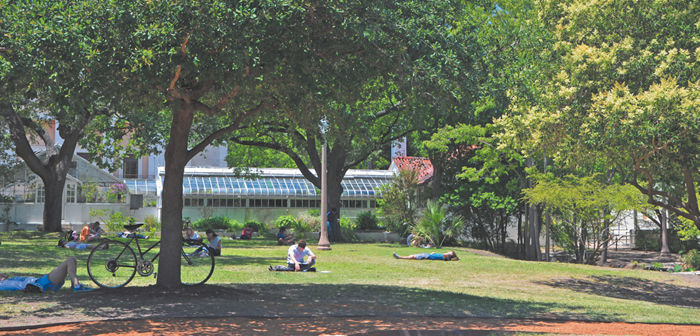
Chapter Opener Image: People depend on plants for food, clothing, lumber, and many other things. But we also rely on plants to help us emotionally; here they are providing a refreshing, calm location in which students relax between classes. Plants are often used as symbols for strong emotions we have difficulty expressing; they speak for us at funerals, weddings, when friends are ill, and also just as a sign of friendship.
OUTLINE
✵ Concepts
✵ Food Plants
- Plants that Supply Carbohydrates
- Plants that Supply Proteins, Oils, and Vitamins
- Plants that Provide Flavor: Herbs and Spices
✵ Plants that Provide Drugs
✵ Plants that Provide Fibers, Wood, and Chemicals
- Fibers
- Chemicals
- Wood
Box 24-1 Plants and People: The Domestication of Plants
Box 24-2 Botany and Beyond: Lipids, Oils, Fats, Trans-Fats, and Human Health
Box 24-3 Plants and People: Natural Drugs, Endangered Species, and Women’s Rights
LEARNING OBJECTIVES
After reading this chapter, students will be able to:
✵ Discuss the times and places in which early humans began to domesticate crops.
✵ List six plants that provide carbohydrates.
✵ Discuss important characteristics of carbohydrates such as glycemic index, gluten, and fermentability.
✵ Describe several human uses of plants that produce proteins, oils, or vitamins, and know the difference between complete and incomplete dietary proteins.
✵ Describe the plants that supply us with chocolate, vanilla, coffee, tea, pepper, and spices.
✵ Identify plants that produce either harmless or harmful drugs, including tobacco and marijuana.
✵ Explain how we use plant fibers today and describe new alternative plants that may provide fibers while causing less harm to the environment.
 Did You Know?
Did You Know?
✵ People changed from being hunter—gatherers to farming city dwellers only after the end of the Pleistocene Glaciation 12,000 years ago.
✵ Aztec chocolate was savory and bitter (think of Mexican mole sauce); sweet milk chocolate was invented in Europe.
✵ The quest for spice plants such as cinnamon, cloves, and black pepper was the motivating force for the discovery of the Americas, the circumnavigation of the Earth, and virtually all other early worldwide explorations.
✵ Evidence continues to accumulate that marijuana has many beneficial effects and virtually no harmful ones.
![]() Concepts
Concepts
Ethnobotany is the scientific study of relationships between plants and people. The science is new, the relationships are ancient. We humans have relied on plants during our entire existence. Some of our teeth, the incisors and molars, are adapted for biting off and grinding plant parts such as leaves, fruits, seeds, and stems whereas our canines are adapted for tearing animal flesh. We are omnivores: Food plants have been and still are crucial to our survival. Our ancestors also relied on plants for shelter and protection, especially forest trees; at least as far back as 125,000 years ago, perhaps even much farther, our ancestors learned to use fire, and then to control it, how to burn wood to keep themselves warm and scare away predators. They learned to roast meat and much later, after pottery was invented, learned to boil food. Even today, almost half the world’s population still relies on wood fires for warmth and cooking every day.
Throughout our entire time as a species, Homo sapiens in the family Hominidae, Earth was in the Pleistocene Ice Age, also called the Pleistocene Epoch. Snow and ice covered much of the northern hemisphere and all mountainous regions everywhere. The lowlands of Africa were mostly free of ice and snow; it is there that we humans diverged evolutionarily from our close relatives, and where we hunted animals, gathered berries, seeds, and firewood. About 12,000 years ago, a momentous event occurred: Earth’s climate became warmer, glaciers retreated, and plants and animals spread into vast regions previously covered by ice sheets. The Holocene Epoch had begun: It is the warm period in which we are living now. The Holocene is probably an “interglacial period”—the ice age probably has not ended; we are merely experiencing one of its temporary, cyclical warm periods (FIGURE 24-1).
The dramatic climatic warming that occurred in the last 12,000 years could have been disastrous for us, but instead we adapted in a remarkable way: We began to cultivate some of our food rather than merely searching for it. No other animal does this. Our ancestors saved part of their harvest and planted it the following spring; they protected their fields, and they chose to cultivate plants with desirable characters such as larger fruits and seeds while weeding out those with less desirable traits. Thousands of years before Charles Darwin and Alfred Russel Wallace discovered natural selection, our ancestors were practicing artificial selection and the domestication of plants and animals. As far back as 11,000 years ago, some early people in South America started cultivating potatoes, perhaps the very first crop plant; wheat and lentils were domesticated 9,000 years ago in the region that stretches from southeastern Turkey to western Afghanistan, an area now known as the Fertile Crescent (FIGURE 24-2). Not long afterward, rice farming began in Southeast Asia, and later pearl millet was domesticated in Africa. Wherever people were in the world, they began cultivating plants shortly after global temperatures began to rise, and agriculture was invented at least four separate times on different continents.

FIGURE 24-1 For 50 million years, lasting until just 12,000 years ago, much of the Earth looked like these mountains near Anchorage, Alaska. At that time, the snow and ice would have been thicker everywhere, and most lakes and even major portions of the oceans would have been covered with a sheet of ice.
The close relationship that developed between people and their crops had profound consequences for us. Archeological studies of the Fertile Crescent region reveal some of those consequences. Crops have to be defended, so people settled in fertile areas and stopped migrating. They built villages and then very soon the first cities came into existence: Ur, Sumer, and Babylon. Erbil, in modern Iraq, was already a city 8,000 years ago. People learned to live together and govern themselves in groups larger than just family units or small tribes. Writing was invented to keep track of the contents of sealed containers of food, wine, and beer. Mathematics was developed, especially the geometry needed to survey crop land and build canals and irrigation projects.
The Holocene warming and the development of civilization changed our relationship with many plants other than those that provide food. Cotton, flax, and hemp were grown for their fibers; medicinal plants were tended in drug plant gardens; and with the discovery of copper and then bronze, sharp, durable axes and saws could fell trees for the wood needed to build temples, palaces, and ships. Of special significance, one of the first things early civilized people did was to cultivate plants for their beauty: The Hanging Gardens of Babylon are perhaps the most famous but were not the first; much early Egyptian art depicted ornamental plants.
In the thousands of years since people began to cultivate plants, agriculture has changed greatly, but our reliance on plants has not. This chapter describes only a few of the many plants that are essential to us; you will undoubtedly notice others as you go about your life from day to day.
![]() Food Plants
Food Plants
Plants that Supply Carbohydrates
Carbohydrates are crucial to our lives. Our bodies use sugars and starches in many ways: Some are respired and produce adenosine triphosphate (ATP); others are building blocks of our own carbohydrates, and many are chemically modified and used to construct important molecules such as amino acids, lipids, nucleic acids, and many others. We cannot digest carbohydrates such as cellulose, hemicelluloses, and lignin but these provide bulk and keep our digestive systems moving material along regularly (they prevent constipation). The greatest part of our diet, in terms of weight, volume, and calories, is usually carbohydrates. We eat bread, pasta, pastries, potatoes, and rice, and all consist mostly of carbohydrates.
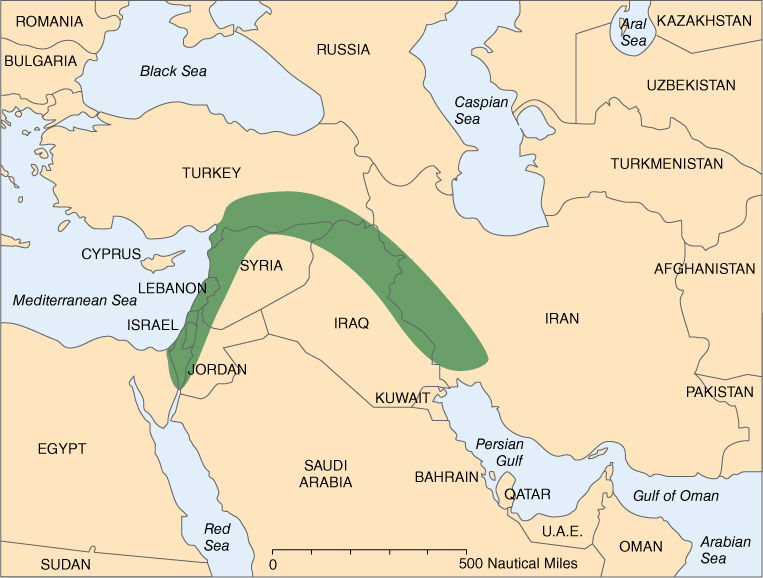
FIGURE 24-2 Several thousand years ago, the region of the Fertile Crescent received more rain than it does now, and large areas could be cultivated.
Foods rich in carbohydrates come from several plant families, but the grass family Poaceae is especially important. All our cereal grains are the small fruits of grasses, each with one seed: wheat, rice, corn, oats, rye, barley, and more (FIGURES 24-3 and 24-4). If wheat and rice were to suddenly disappear, almost the entire human population would starve. The fruits of grasses are technically known as caryopses (sing. caryopsis) but we call them grains, kernels, or seeds. Each has a tiny embryo (the “germ”) and a large amount of endosperm, which is almost entirely starch (amylose), which is easy to digest into its monomers, glucose (FIGURE 24-5). When dry at harvest, cereal grains are stable and can be stored for years if kept dry and free of mice and similar animals. Cereal grains are easily prepared as food simply by boiling, or by grinding them into flour that can be made into bread or pasta. All can also be fermented to beer, sake, or whiskey.
The seed coat and fruit wall together of each caryopsis are called the “bran.” If the entire kernel is ground to flour, we obtain whole wheat flour. For white flour or “all-purpose” flour, kernels are shaken to knock off the bran, and grinding produces a finer, smoother, more uniform white flour that is preferred for cakes and more elegant dishes. But removing bran also inadvertently removes the embryo as well. The embryo contains enzymes that digest the endosperm, so grinding the whole grain with the embryo disperses digestive enzymes throughout the flour; unless it is kept perfectly dry, this whole wheat flour undergoes self-digestion and becomes rancid. Removing the embryo before grinding produces a flour that can be stored for years with little change in quality, but which is lower in proteins, vitamins, and minerals. Recently, more appreciation is being given to more natural foods, foods with fiber, and foods that have been processed less. It is becoming more common to see whole wheat bread and pasta.
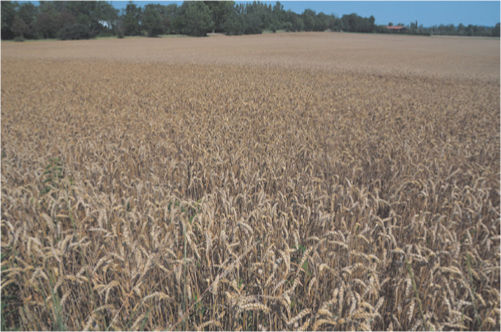
FIGURE 24-3 Wheat fields can be large or small, irrigated or “dryland” (they rely on rain only). Wheat thrives in temperate climates with moderate temperatures and with moderate amounts of rain; it does not grow well if summers are cool and damp, or in tropical areas that are too rainy.
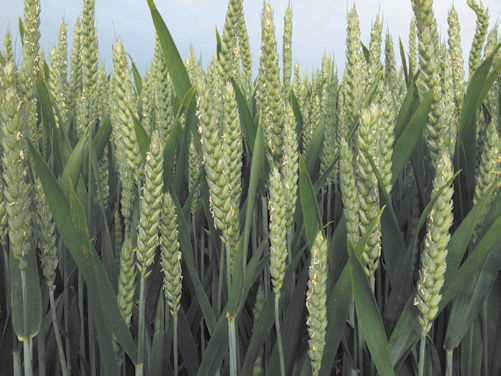
FIGURE 24-4 Each stalk of modern wheat produces several rows of large grains. These shown here are immature; they still have the stamens attached, although by this time the carpels have been fertilized and the seeds are developing. Each grain is an individual fruit, each containing one seed. When the wheat is mature, it will dry out and turn tawny brown.
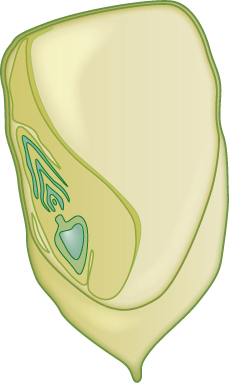
FIGURE 24-5 The fruit of any cereal grain will contain a small embryo (shaded, on left) and a large amount of endosperm (unshaded, on right), both surrounded by the dry fruit (referred to as the bran).
Wheat, which now exists as several species, is an ancient crop, having been cultivated at least 9,000 years ago in the Fertile Crescent. Einkorn wheat (Triticum monococcum) probably resembles the first domesticated wheat: It is a small plant that grows even on stony ground, has only a few grains per plant, and is diploid. It still grows in Turkey in marginal areas not used for cultivation. Einkorn wheat now is cultivated mostly for its historical value and to maintain genetic diversity. Emmer wheat (Triticum dicoccum) is a later wheat, and it too is a small plant with few kernels per plant, but it is tetraploid. Emmer wheat was cultivated by ancient Egyptians and supported not only their empire but also that of the Romans. We are not exactly certain when and how our modern wheat, Triticum aestivum, originated. It is hexaploid, with six full sets of chromosomes in each nucleus. Unlike the other two, T. aestivum is a large plant with many kernels per stalk (FIGURES 24-6 and 24-7).
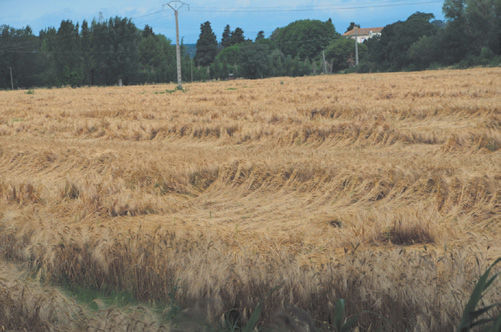
FIGURE 24-6 Until recently, one of the problems with wheat was that its shoots grew to be too long and weak, and would often fall over due to wind or strong rain (we say that the wheat had “lodged”). This made it difficult to harvest, and the lodged wheat might rot if it lay on wet soil.
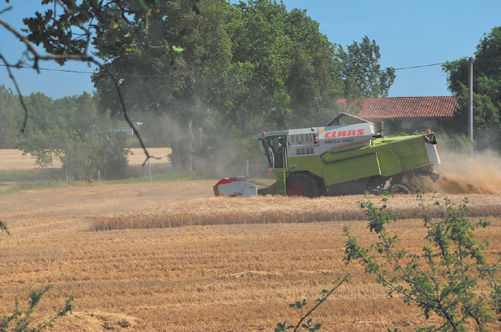
FIGURE 24-7 A new genetic modification of wheat was to alter it such that its stems are shorter and stronger, and thus they almost never lodge. This allows all the wheat plants to stand upright until the fruits are mature, then when they dry, they can be harvested easily.
Wheat differs from other cereal grains—and from all other starchy foods—in that it contains significant amounts of the elastic protein gluten. As wheat dough is kneaded, gluten molecules are stretched into springy strands within the dough, which trap carbon dioxide bubbles produced as yeast respires, which causes the dough to rise. By kneading wheat flour to develop gluten strands and then allowing the dough to rise before baking, we get a bead that is soft, easy to chew, and more readily digestible. If flours of rice or corn, which have no gluten, were kneaded with yeast the same way, nothing would happen; if allowed to set, the dough would not rise, the carbon dioxide would just escape. Rye bread, corn bread, and others have significant amounts of wheat flour or gluten mixed into the dough. When making cookies, cakes, and biscuits with wheat flour, the dough must not be kneaded if elasticity and stringiness are to be avoided.
Rice (Oryza sativa) was domesticated in east Asia about 7,000 years ago (FIGURE 24-8). It is now the main source of carbohydrates for more than half the world’s population. The two most common varieties of rice are Oryza sativa subspecies sativa, which is moist and sticky when cooked, making it easy to eat with chopsticks and to mold for sushi. Oryza sativa subspecies indica is fluffy and drier when cooked, and is the main rice used in the West.
To produce rice that is white when cooked, it is “polished” to remove its bran, and vitamins are lost in the process. People who rely on rice as their main food with sparse vegetables and little meat may have a lack of vitamin A, which results in “vitamin A deficiency disorders” (VADD), including impaired vision, compromised immune systems, and many other symptoms. Genetic engineering has produced “golden rice,” which is rich in beta-carotene, the precursor of vitamin A. Golden rice could greatly improve the diet in many parts of Southeast Asia, but concern over its being a genetically modified organism (GMO) food has limited its acceptance. Natural rice has genes to produce beta-carotene, but they are expressed in the leaves, not in the seeds. Thousands of varieties have been screened, and none has the precursor to vitamin A in the seeds. It seems that golden rice, a GMO, is the only way to make rice more nutritious.
Other cereal grains such as oats, barley, rye, and corn are consumed in much smaller quantities than wheat or rice. We eat them as oatmeal, rye bread, and sweet corn; much of barley is brewed into beer. But the greatest amount of these is used as feed for livestock such as cattle, pigs, poultry, and sheep. These animals are raised to supply us with meat, milk, or eggs. If we were to eat the grains directly, we would be primary consumers, but because we consume the animals instead, we are secondary consumers: We are eating higher on the trophic pyramid. Generally, this means it is necessary to use 10 kg of cereal grains to obtain 1 kg of animal protein. If we would consume less meat, we would not need to convert so much natural land to farms and ranches.
Oats (Avena sativa) are high in protein and beneficial lipids, and they help keep cholesterol at safe levels (FIGURE 24-9). Oats were domesticated as recently as 3,000 years ago, and at present they are becoming more popular in our diets because of their healthful effects. Barley (Hordeum vulgare) is an ancient crop, having been domesticated about 9,000 years ago. The ancient Sumerians, the people who built the first cities and irrigation projects in the world, discovered how to brew barley into beer. This was a momentous discovery because fermentation produces more vitamins, making beer more nutritious than raw barley, and it sterilizes the beer by killing microbes that grow on the grain and in the water (FIGURE 24-10). The yeasts that ferment beer use only glucose, not starch, so before brewing begins, the barley is lightly roasted to convert starch to glucose. This toasted barley is called “malt” and it is not only used for brewing, but also in malted milkshakes.
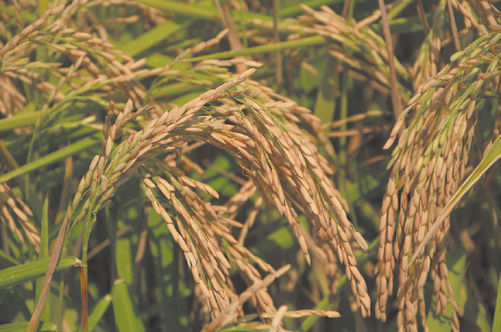
FIGURE 24-8 Rice is a cereal grain that greatly resembles wheat in size, shape, and habit. This is grown in Louisiana, east Texas, and California where land is extremely flat and large areas can be flooded for irrigation.
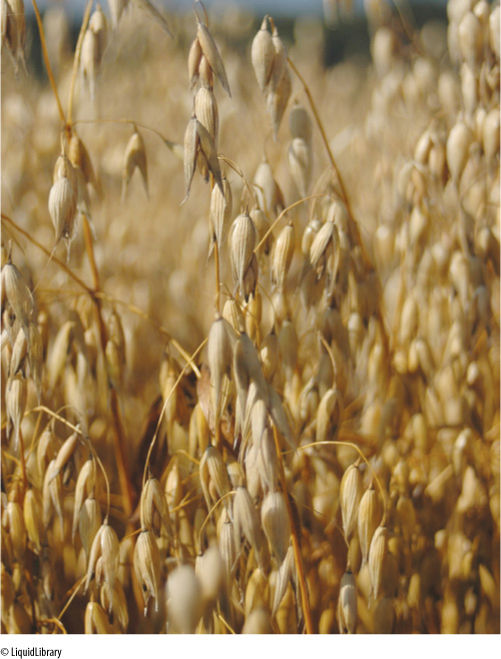
FIGURE 24-9 Oats that are ready to be harvested. Each stem produces many fewer grains than does wheat, and oats are not as rich in protein. The stems that remain after the grains are harvested are referred to as straw, and are used as bedding for livestock but have virtually no nutritional value.
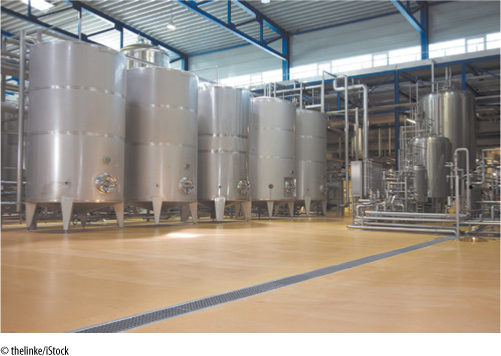
FIGURE 24-10 Beer is brewed in large vats that allow sugars in toasted barley to ferment, which converts them to ethyl alcohol. The vats are open, allowing carbon dioxide to escape; the bubbles that you see when you pour a beer are carbon dioxide that has been added artificially just before the beer was shipped to market.
Corn (Zea mays; often called maize) was domesticated in Mexico as long ago as 9,000 years before present (FIGURE 24-11). Corn caryopses (kernels, “seeds”) are important in the cuisine of Latin America and the United States, being ground into gluten-free flour and eaten as corn tortillas, corn bread, whole kernel corn, and corn on the cob. Today, much of the crop of corn kernels is processed into corn syrup (often called “high fructose corn syrup”) and used as a sweetener, as animal feed, or converted to ethanol. The entire corn plant can also be chopped into pieces, piled into large mounds and allowed to partially ferment; this produces a slightly alcoholic animal feed called “ensilage” or just “silage”; cattle love it.
Other plants beside cereal grains also provide significant amounts of carbohydrates. Potato tubers (Solanum tuberosum) grow underground at the base of herbaceous annual plants; each plant produces many tubers. The above-ground portions of the plants die in autumn; in the following spring, some of the axillary buds (the “eyes) on each tuber sprout and grow upward, producing new plants that are clones of the original. Potatoes are almost always propagated by planting pieces of tubers, each piece having at least one eye. This ensures that the new plants are clones of the parent and will have the same desirable characters as the original plant.
Potatoes may be the very oldest of all our crops, the first domesticated plant species. Archeological evidence indicates that South Americans in the Andes may have cultivated potatoes as early as 11,000 years ago. Potato tubers have many features that allowed early people to domesticate them: Plants are easily propagated by merely planting a few of the many tubers produced by a previous crop; tubers can be eaten raw or roasted (thus they could be cooked even before people had clay pots and knew how to boil food); they can be stored for months simply as tubers, especially in the cool areas of the Andes. At present, many markets in the United States carry four or five types of potatoes, but any village market in Bolivia, Chile, or Peru will have at least a dozen varieties, many with exotic shapes, colors, and flavors.
The words “yam” and “sweet potato” are used interchangeably by most people, but each refers to a separate species. Sweet potatoes (Ipomoea batatas) are a type of root with an orange flesh; most North Americans are familiar with this food (FIGURE 24-12). Sweet potatoes originated in South America and their rich color results from high levels of beta-carotene, the precursor to vitamin A. Sweet potatoes also have complex carbohydrates that we digest slowly, releasing sugars that enter our blood stream gradually and evenly. In contrast, sugary foods such as candy and fruit juice, or foods with just starch such as white bread and potatoes, are digested quickly and permit sugars to pass into our blood more rapidly than our bodies can use it. Such foods have a high glycemic index. The rapid rise in our blood sugar gives us a temporary feeling of being energetic, but it also stimulates our pancreas to release large amounts of insulin and then later it releases glucagon. These two hormones exert strong effects throughout our body and their rapid rise and fall disturbs normal metabolism. Foods that release their sugar slowly, like sweet potatoes, have a low glycemic index, they do not cause abrupt changes in our insulin and glucagon levels and are more healthful than foods with a high glycemic index (TABLE 24-1).
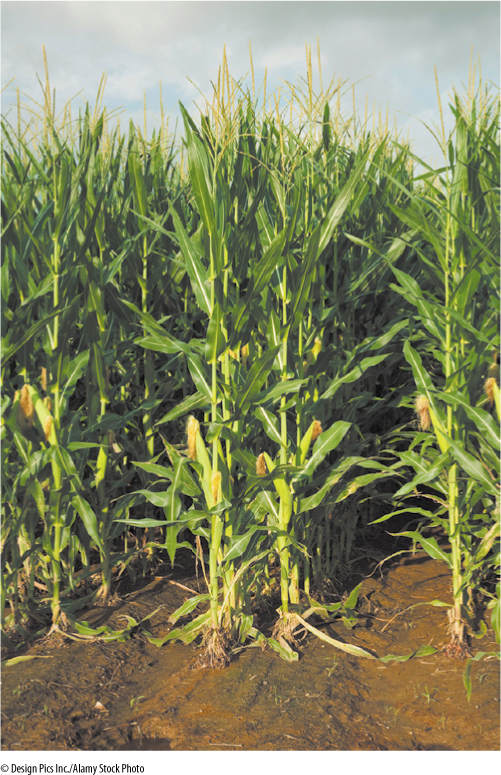
FIGURE 24-11 Corn, Zea mays, is an unusual grass: At its apex it has a set of staminate flowers (called its tassel) and in the middle of the plant are one or two sets of carpellate flowers (the “ears”) that develop into the fruits (the cob of corn).
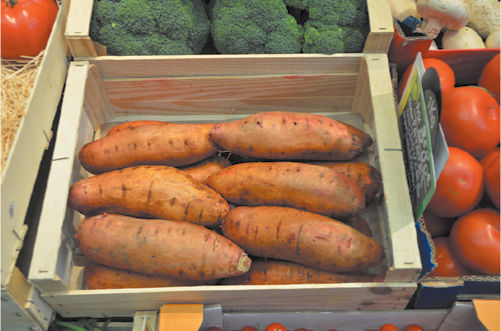
FIGURE 24-12 Sweet potatoes are large roots with orange flesh due to their high content of beta-carotene. They can be stored easily and are not only extremely nutritious but also a good source or dietary fiber.
Yams (several species of Dioscorea) are tubers with white flesh and are much larger than sweet potatoes, often being 2.5 m long (8 feet), and are sold as short sections of tuber. Different species of yams were domesticated in Africa, Asia, and South America.
Most North Americans eat cassava (Manihot esculenta) only occasionally, as tapioca pudding. But much of the world relies on cassava as their main carbohydrate source, and often for the largest part of their calories. Cassava grows well even in poor soil, whether it is dry or wet, thus it is a good crop for many people in marginal areas. Unfortunately, it is almost pure carbohydrate and has as little as 1 % protein: A diet that relies too heavily on cassava leads to protein deficiency. At harvest, cassava is extremely poisonous and must be processed as described in BOX 24-1. Typically the flour is dried and roasted, then added to soups as a thickener.
Sugar cane (Saccharum officinale), sugar beets (Beta vulgaris), maple trees (various species of Acer), and honey provide us with concentrated sucrose, glucose, and fructose, chemicals we sense as being sweet. Sugar cane is a tall, perennial grass that grows rapidly in warm wet areas, such as Hawaii and near the Gulf of Mexico (FIGURE 24-13). In autumn, its leaves are stripped off and discarded, the thick stems are cut into pieces, and immediately shipped to a refinery where the juice is pressed out. The leftover crushed shoots, called “bagasse,” can be dried and burned to provide power to the refinery. Sugar cane produces so much bagasse that research is underway to find better uses for it than merely burning it. Lime is added to the juice to bind to and remove wax, cutin, and other non-sugar compounds, then the juice is boiled to remove water and concentrate the sugars; it begins to crystalize when it reaches a concentration of 60%. These crystals are “raw sugar” and are separated from the remainder of the boiled juice, which has become molasses. Raw sugar is becoming increasingly popular as a product that is a bit more healthful, a little less processed than refined white sugar: A few vitamins and minerals adhere to the sugar crystals, and less energy is needed because it is not refined further. For pure white refined sugar, raw sugar is dissolved in fresh water to wash away everything except sucrose, then it is boiled to separate out the sugar crystals. The final whitening is achieved by filtering it through charcoal made of burned animal bones.
TABLE 24-1 Glycemic Index of Several Foods
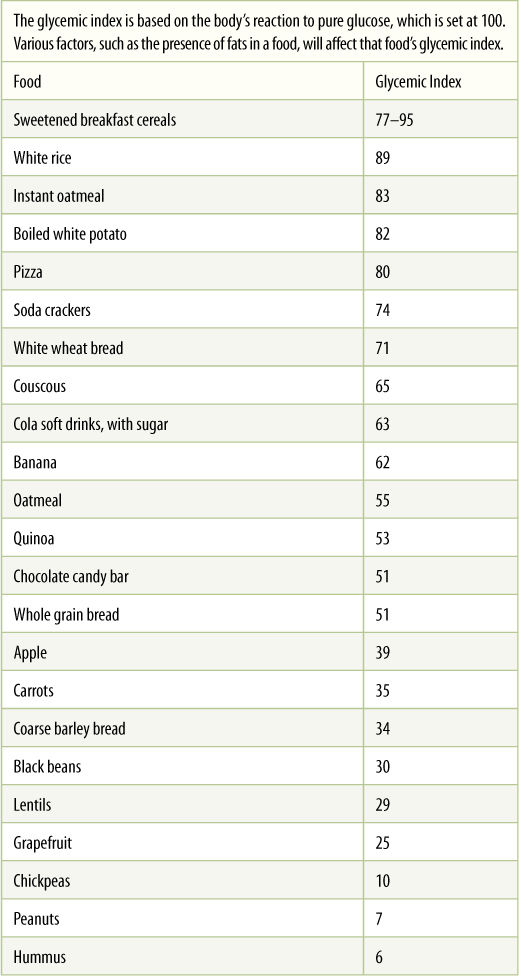
Sugar cane was domesticated in Southeast Asia at least 5,000 years ago, and sugar plantations were established in the Caribbean shortly after Columbus’s voyages (TABLE 24-2). Unfortunately the cultivation of sugar cane, just like that of tobacco and cotton, is labor intensive and was the basis for slavery.
Sugar beets are a very new crop. Some beets are sweeter than others, but this was of no importance as long as sugar cane was available. But during the Napoleonic wars, France was cut off from sugar shipments from its colonies in the Caribbean by British blockades. Napoleon ordered botanists to improve the sugar concentration in beets, because beets can be cultivated in France itself. The botanists succeeded, but not before Napoleon was defeated. Modern sugar beets have little in common with their red ancestral beets: Sugar beets are large, about the size of a football, and are pure white with no red pigment at all. They are dug in autumn and then processed just as sugar cane is.
Plants and People
Plants and People
BOX 24-1 The Domestication of Plants
Using a plant for food is different from cultivating it. All herbivores and omnivores graze on leaves and twigs or pick seeds and fruits; some dig up fleshy roots, tubers, and bulbs. Only we humans sow seeds, tend and harvest crops, and then store seeds or tubers with the definite intent to cultivate new crops in the following years. The first species to be domesticated had several important properties. The edible portions had to be easy to harvest and store; they had to be edible either raw or with very simple preparation. They also had to be simple to care for and be annuals so they would produce a crop just a few months after having been planted. Potatoes are a good example: Each small, annual plant produces many tubers that are easily harvested by digging them up with a stick or bare hands. Potato tubers are edible raw or roasted just by putting them into a fire or mixing them with embers. Tubers can be stored for months with no effort other than protecting them from rats and mice. A farmer always overlooks a few tubers in a field, so new plants sprout in the following spring with no effort on the part of the farmer. If people move to a new region, tubers can be carried along and planted wherever the people settle. Cereal grasses such as wheat, rice, oats, and barley have similar characteristics.
Perennial plants such as date palms and olive trees could be domesticated only after farmers really understood what they were doing. People searched for and gathered wild dates and olives, but it required optimism and social stability to plant seeds, knowing that the plants would not bear their first crop until years later (FIGURE B24-1).
Plants that are edible only after elaborate processing are among the last to be domesticated. The starch-rich roots of cassava are extremely poisonous when fresh; they must be ground into flour, then mixed with water and allowed to stand while the plant’s enzymes break down the toxins. After a few hours, the water is discarded, fresh water is added, and the process is repeated several times to finally make the flour edible. It seems likely that only near-starvation would drive people to attempt to eat cassava, and many probably died before it was discovered how to prepare it safely. We obtain chocolate from cacao beans that are not toxic, but their processing is elaborate: They must be harvested, fermented, roasted, and ground into paste; all steps must be done correctly or the product is useless. Other plants that require extensive processing and were not domesticated until recently are coffee, sugar cane, and vanilla.
Grapes and barley are a bit different; they are both ancient foods and also newer foods. Grapes can be eaten raw of course, and barley is easily roasted or boiled; both species were cultivated very early. But by 6,000 years ago, Sumerians learned to ferment barley into beer, and grapes into wine. This was crucial because fermentation sterilizes the ingredients. Whereas Stone Age people drank from clear, clean streams, early city dwellers often just had muddy rivers that typically were fouled by human and animal waste. Germ-free beer and wine were far more healthful. In addition, fresh grapes cannot be stored; the only way to preserve them for winter is to dry them into raisins or ferment them into wine, both of which will last a year until the next harvest. Barley is easy to store in dry climates but is attacked by fungi if wet. Beer, protected in air-tight barrels or jars, can be stored anywhere, especially on the early ships that crossed the Mediterranean.
The concept of plant domestication and food processing has taken on a new meaning since the middle of the 1900s. Until then, almost all food was natural and organic; there were no artificial flavors, colors, preservatives, no modified corn syrup, and no trans-fats. Most meals were prepared fresh daily from the garden or a local market. Starting in the early 1900s, various food additives were invented, and many foods are now treated like chemical raw materials for manufactured products that have only doubtful nutritional value. Breakfast cereals, snack foods, soft drinks, and candy bars are the most obvious examples. Parts of many cities, especially low-income neighborhoods, have been described as “food deserts”: They may have grocery stores and convenience stores, but they have little real, unadulterated food. From the beginnings of agriculture, farmers artificially selected traits by crossing certain plants with each other, and did the same with domesticated animals. Recently, techniques have been invented for manipulating DNA directly, for modifying an organism’s own DNA and for transferring genes between unrelated organisms. These are known as genetically modified organisms (GMOs), and many GMO plants, animals, and foods may be perfectly safe; some definitely make certain foods more nutritious. But many people feel it is safer to gather more data about GMOs before we use them for food—food actually goes into our bodies, into our cells. For 11,000 years, farming and gardening have provided us with nutritious, natural foods; it still does. We just have to be aware of what we are eating and make conscientious choices.
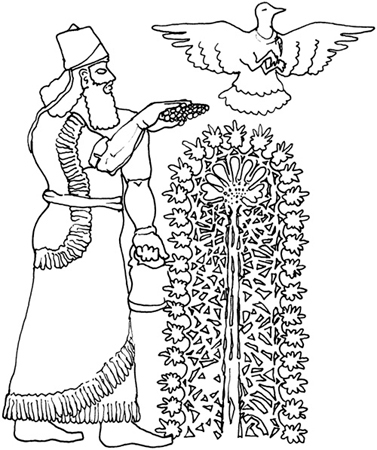
FIGURE B24-1 The Sumerian priest in this sketch is facing an object that is unrecognizable as a plant, but images like this have a long history. As we go back to older images, the object becomes more plantlike: It is a date palm. By the late Sumerian periods, dates were such an important food that the palm was considered a sacred tree of life and depictions of it became so stylized that they no longer resembled real plants. The objects the priest is holding are believed to be a container filled with pollen and a device for sprinkling pollen onto the carpellate flowers so as to ensure a good crop of dates.
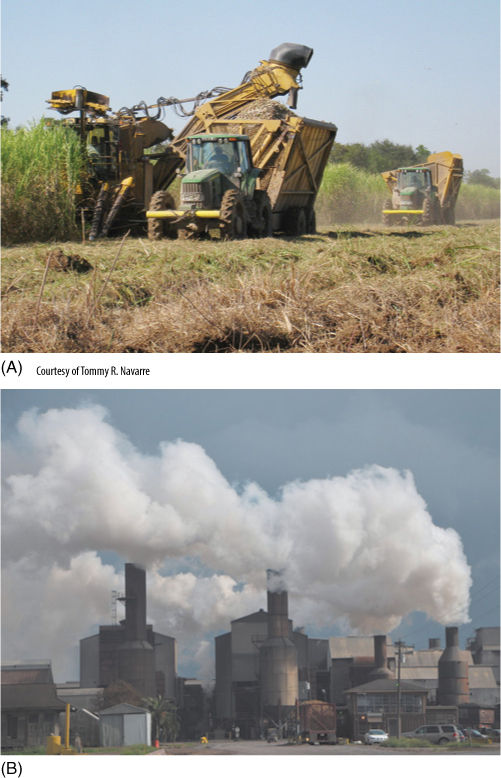
FIGURE 24-13 (A) Sugar cane is a large, robust grass. During harvest, this machine strips off the leaves, cuts the shoot (the cane) away from the root, and then cuts the cane into pieces that are easier to manage. The pieces are transferred to a cart, then to a truck and taken to the refinery immediately. The bases of the stems, along with the roots, are left in the ground so that they will sprout new stems for a new crop in the following spring. (B) Sugar cane juice must be boiled several times to remove enough water so that the sugar will crystallize. The exhaust over the refinery may look startling, but it is all just steam being vented.
TABLE 24-2 Plants of the Americas
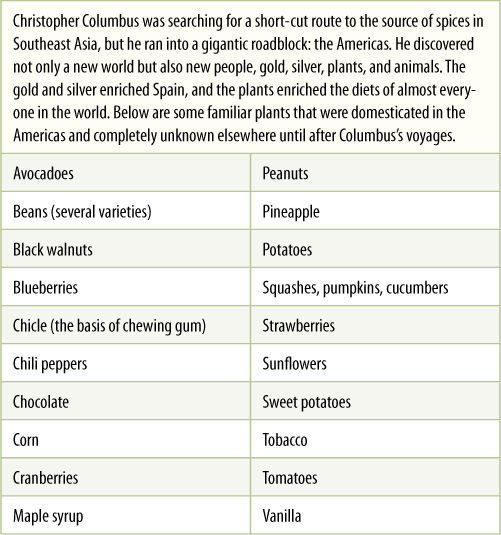
Several species of maple trees (Acer saccharum, A. rubrum, A. nigrum) produce xylem sap that carries sugar in early spring. It is tapped by driving hollow spikes into the sapwood of a tree and allowing the xylem sap to drip into a bucket (FIGURE 24-14). The sap is then boiled to concentrate it into maple syrup.
Honey is a plant product processed by honeybees (Apis mellifera). Honeybees gather nectar from flowers and coincidently pollinate the flowers. Bees concentrate the nectar first by eating it and regurgitating it multiple times, then they deposit it on wax and fan it with their wings until the sucrose, glucose, and fructose reach a concentration of 80%. The honey is then sealed into honeycombs cells; at 80% sugar and only 20% water, honey is so dry that if fungus or bacteria spores fall onto it, water diffuses into the “dry” honey from the “wet” cells, desiccating them and killing them, so honey persists for years. Honey is often consumed by us with no processing at all. It is sometimes filtered to remove debris and bits of bee parts. People often assume that honey is more nutritious than sugar but it has negligible amounts of vitamins or minerals; some honeys do pick up flavor molecules from the flowers that provided the nectar, but these flavors are only pleasant, not nutritious.
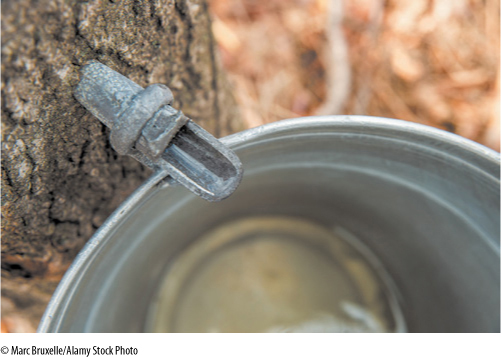
FIGURE 24-14 Maple trees can only be tapped for maple syrup in early spring—that is the only season in which sugars are transported in xylem rather than in phloem.
Plants that Supply Proteins, Oils, and Vitamins
A small number of plants provide us with significant quantities of protein. All living plant cells have proteins in the form of enzymes, microtubules, membranes, and so on, but these are present in only small amounts. Some species produce seeds rich in proteins, and the legume family Fabaceae is especially important, having beans, peas, lentils, peanuts, chickpeas, and many other foods (FIGURE 24-15). Many legumes form root nodules that contain symbiotic nitrogen-fixing bacteria; consequently these plants have two sources of reduced nitrogen for their growth: that present in the soil as well as that produced by the symbiotic bacteria. As a result, legumes usually grow well even on nitrogen-poor soils or in fields without nitrogen fertilizer, and they produce seeds with more protein than those of most plants. At present, most of us rely on animal-based meat, milk, and eggs for our protein, but this is a relatively modern luxury; throughout history, most people relied on legumes. There are more than 16,000 species in the legume family, and many produce edible seeds and leaves; we are still surveying the lesser-known legumes as possible new species for domestication.
A protein source that has all 20 amino acids in more or less adequate quantities for us is said to be a complete protein. Many proteins, however, are low in one or several amino acids (they are incomplete proteins) and we cannot rely just on that one protein. But various pairs of proteins are complementary proteins: One has adequate amounts of the amino acids that the other lacks, and vice versa. Many ancient cultures discovered complementary proteins without realizing it: The corn, beans, and squash of Mexican food have complementary proteins, as do rice and beans or a sandwich with peanut butter and wheat bread. Soybeans (or just soy; Glycine max) are a legume with complete proteins and have long been important in Asian diets. Westerners have only recently begun to appreciate the value of soybeans, but now they are one of the most important crops in the United States. Soybean seeds are 40% protein and 20% oil; we mostly press the seeds and use the soy oil for ourselves and then use the protein-rich soy meal as animal feed. But we are increasing our use of soy protein as human food, often as soy milk, tofu, and also as textured vegetable protein (TVP). TVP is processed soy that has been manipulated to give it the texture and appearance of meat. Anyone can distinguish a steak or pork chop from TVP, but often our ready-to-eat commercial meals consist of pieces of something (meat? TVP?) ground or breaded and fried or in a sauce with vegetables, noodles, or something else that prevents us from paying much attention to the “meat.” TVP presents us with a bit of a dilemma; it is not a natural, simple food, but on the other hand, when we eat TVP instead of real meat, we are reducing the number of animals that must be slaughtered for food and we are also eating lower on the food chain, being primary instead of secondary consumers. An acre of land used to cultivate soy for TVP produces 15 times more protein than if that same land were used for pasture for cattle.
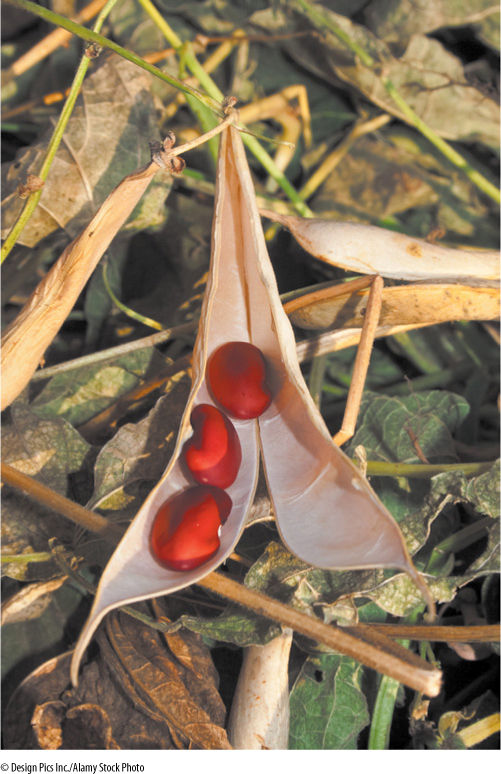
FIGURE 24-15 Dozens of species and varieties of beans exist and are used by us for food. Shown here are kidney beans, also called red beans, which are used widely in cooking. After they mature on the plant, the pod (fruit) of each dries and twists, breaking open and releasing the beans. They must be harvested just before the pod opens, otherwise the beans would fall to the ground and could not be collected easily.
Legumes are also important as feed for domesticated animals. Horses and cattle are fed alfalfa either by letting them graze on fields of it or by mowing it and then drying it to make hay (FIGURE 24-16). It can also be compressed to pellets that are easily stored and transported. Alfalfa is especially important for cows while they are lactating and producing several gallons of protein-rich milk every day.
Our own bodies synthesize almost every lipid we need with the exception of the omega-3 and omega-6 fatty acids: Linoleic acid and alpha-linolenic acid are essential fatty acids and we must obtain them in our food. Plants make these omega fatty acids and other lipids that are beneficial for us, and just as important, plants never make cholesterol or harmful trans-fats (see BOX 24-2). Consequently lipids obtained from plants tend to be healthful; good sources are nuts such as walnuts, pecans, and almonds; several fruits such as avocados, olives, and coconuts; and certain seeds such as peanuts, sunflower, canola, safflower, and soybeans (FIGURE 24-17).
Much of the plant lipid in our diet comes in the form of oils that have been extracted and used as salad dressing or for frying. Extracted oils are complex mixtures of several different lipids as well as lipid-soluble components; thus each oil has its own distinctive flavor and aroma. When used for frying, each begins to scorch at its own particular temperature and cannot be heated above that without causing disagreeable flavors and risk of fire. For example, flax seed oil begins to smoke at only 107°C (225°F), too cool to be useful for frying, whereas olive oil can be heated to 199°C (391°F), and peanut oil can be used for frying food at 232°C (450°F). (Note: If oil catches fire, extinguish it by putting a lid on the container or smothering it with baking soda, but never put water on it.) Many plant oils are either toxic or contain dangerous lipid-soluble contaminants. Tung oil itself is toxic and must never be used for cooking or to treat wooden bowls or spoons that might touch food. Unpurified castor bean oil contains ricin, one of the most deadly compounds known; purified castor oil has no ricin but is a powerful laxative. Many plant oils, especially those with several carbon—carbon double bonds (polyunsaturated oils) are used as chemicals such as varnishes and lacquers (see below).
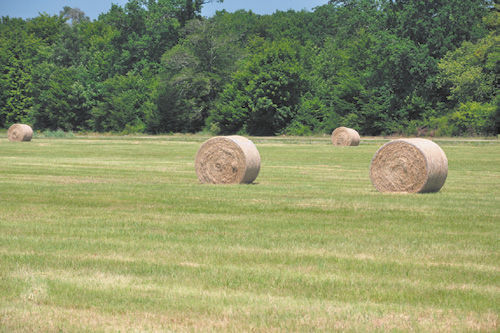
FIGURE 24-16 After alfalfa has been mowed then allowed to dry in the sun for several days, it is rolled and compacted into these bales. In this form, the hay can be stored for up to a year, but its quality deteriorates after several months. Alfalfa hay, being a legume, is rich in proteins even though it is only the leaves and stems that are baled and fed to livestock.
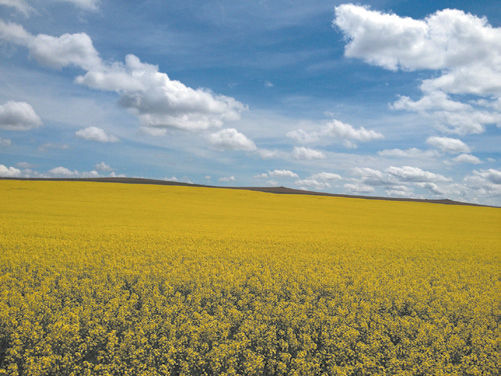
FIGURE 24-17 Canola oil is harvested from the fruits of this rapeseed plant, Brassica napus. The oil is used for frying, salad dressings, and as an ingredient during cooking. It is an excellent source of important lipids.
Plants supply us with vitamins and other complex nutrients. All green plants produce every organic compound they need starting with just water, carbon dioxide, sunlight, and minerals. Consequently growing, active plant parts such as leaves tend to be extremely nutritious. In addition, all green parts of plants must make abundant antioxidants that protect cells from dangerous oxygen free radicals produced by photosynthesis (“reactive oxygen species”; ROS). Examples of antioxidants are vitamins C and E; carotenoids (red and yellow pigments of flowers, fruits, carrots; FIGURE 24-18); flavonoids (present in berries), and phenolic compounds (present in coffee, tea, and many leaf-based spices). Dark green leafy vegetables such as spinach, kale, collard greens, broccoli, and Brussels sprouts are especially nutritious.
Several plant families provide particularly nutritious foods. The citrus family Rutaceae is familiar for oranges, lemons, limes, and grapefruit, all rich in vitamin C. The rose family Rosaceae has roses (Rosa) of course but also provides us with raspberries, blackberries, boysenberries, and strawberries as well as the “stone fruits” such as peaches, cherries, apricots, plums, and almonds (almonds are the stones with the fleshy mesocarp and epicarp removed). Apples, pears, and quinces are also members of the rose family. As a note, apples are nutritious and healthful but apple juice is extremely sugary, sweet, and inexpensive; it is often added to other fruit juices not only to sweeten them but to lower the cost of production. The next time you drink any kind of fruit juice, such as pomegranate juice, look at the list of ingredients: Apple juice is usually present. What are the alternatives and consequences? One alternative would be to sweeten the juice with sugar but that adds calories without nutrients and raises the glycemic index. Sweetening the juice with apple juice sweetens the other juice with natural sugars plus other nutrients that are in the apple juice, but this still is a matter of consuming excessive sugar. The third alternative is to drink the juice without sweetening it. Whichever way, nutritionists have recently concluded that whereas fruits are an important, nutritious part of a good diet, sweet fruit juices are not.
Botany and Beyond
BOX 24-2 Lipids, Oils, Fats, Trans-Fats, and Human Health
The term “lipid” covers both fats and oils and several other compounds. Fats, by definition, are solid at room temperature, whereas oils have a lower melting point and, thus, are liquid at room temperature. If oils are cooled sufficiently, they solidify; if fats are heated, as when we use them for frying, they liquefy. In a saturated fatty acid each carbon is attached to two others by what is called a carbon—carbon single bond; each carbon also has two hydrogen atoms attached to it. In an unsaturated fatty acid, at some point in the backbone, two adjacent carbon atoms are attached to each other by a carbon—carbon double bond; each of these two carbons has only a single hydrogen attached to it. The fatty acid is not saturated with hydrogens. An unsaturated fatty acid with one double bond is monounsaturated, and an unsaturated fatty acid with two or more double bonds is polyunsaturated.
Saturated fatty acids tend to align easily with each other and have an orderly, stable packing. They have to be heated to disrupt their orderliness and make them move around as a liquid, so saturated fatty acids make up the solid lipids, the fats. The double bond of an unsaturated fatty acid causes a kink in the backbone, so neighboring fatty acids cannot align well. Instead, they make a jumble and move around even when cool; unsaturated fatty acids are the oils.
Within the bodies of plants and animals the relative proportions of saturated and unsaturated fatty acids determine whether a membrane or a lipid droplet is solid, soft, or liquid. The proportions can be changed by the cells as the surrounding temperatures change. In plants and cold-blooded animals, body temperature is similar to environmental temperature and changes with the seasons. Membranes must remain fluid at all times; these organisms often add oily unsaturated fatty acids in winter, and then replace them with saturated fatty acids in summer because the saturated fatty acids will not become too fluid (“runny”) in the heat.
Two types of double bond are possible in unsaturated fatty acids. If the two parts of the backbone lie on the same side of the double bond, this is a cis-unsaturated fatty acid. But if the two parts lie on opposite sides, it is a trans-unsaturated fatty acid, usually just called a trans-fat (see Figure 24-17). A polyunsaturated fatty acid can have both types of double bond. Neither plants nor animals ever make trans-fats naturally in their bodies. Natural dietary fats are generally beneficial; however, trans-fats are not essential and are never healthful in our diets. They increase the risk of heart disease; they raise the level of “bad” LDL cholesterol and reduce our “good” HDL cholesterol.
The only source of trans-fats in our diets is through food processing: We synthesize them artificially in factories. Unsaturated fatty acids, being oils, often cannot be heated enough to use for frying because they tend to smoke, scorch, and develop a “burnt” flavor. In contrast, many fats can be heated to high temperatures; they melt into a liquid at about the temperature needed for cooking. Furthermore, unsaturated fatty acids (oils) and foods made with them do not have a shelf life as long as that of saturated fatty acids (fats) because oxygen reacts with double-bonded carbons; we perceive this as the fat becoming rancid and inedible. If unsaturated oils are used in foods that need to be stored (such as most commercially prepared, packaged foods), then artificial antioxidants such as BHA and BHT must be added (you see them in many labels, near the end of the ingredients).
Although finding adequate supplies of natural fats needed for baking (such as lard) is possible, starting with plant oils and hydrogenating them (chemically forcing hydrogen onto their double bonds) is easier and cheaper. If the oils were hydrogenated to saturation, they would become extremely hard, too hard. Instead, the oils are partially hydrogenated, which merely saturates some double bonds and leaves others. This results in fats that have a longer shelf life than the original oil and a better texture for baking and frying. The problem is that partial hydrogenation converts some of the natural cis-fatty acids into unnatural trans-fatty acids. The danger of trans-fats has only recently become known, and most food processors have redesigned their products so they no longer use trans-fats. This is not true, however, of all processors or of all processed foods, and it is always best to check the label and avoid anything with ingredients listed as “trans-fats” or “partially hydrogenated.”
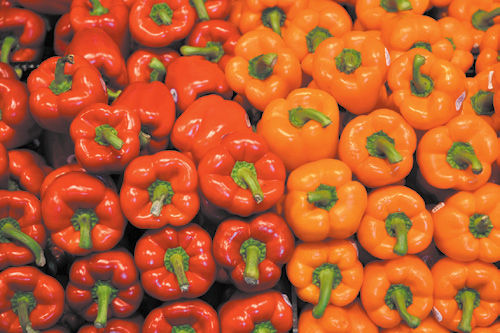
FIGURE 24-18 Red and orange bell peppers are the fully ripe form of green bell peppers; all are Capsicum annuum. These are related to jalapeño peppers but lack the spicy chemical capsaicin; all are excellent sources of antioxidants.
The nutritional value of various plant organs differs. Leaves are rich in vitamins, antioxidants, and other compounds needed in small quantities, but they are low in carbohydrates, proteins, and lipids. No one will ever get fat by eating leafy green salads unless too much salad dressing is added. Seeds are embryos and typically are packed with energy reserves the embryo would use during germination. Seeds tend to be rich in carbohydrates in the grasses; rich in proteins in the legumes; and rich in oils in nuts and peanuts. In general, whole seeds (not polished rice or wheat without the bran and germ) supply both nutrients and calories. Fleshy fruits such as apples and oranges attract animals that eat the fruits and disperse the seeds; such fruits tend to be sweet, rarely oily (avocado), and virtually never rich in protein or vitamins. Dry or leathery fruits such as peanut shells, orange peels, and walnut shells protect seeds mechanically by being fibrous; they typically have no nutrient value at all when mature. Snow peas are a rare example of a dry fruit used as a food but we only eat them while they are very immature, alive, and only partially fibrous. Cucurbits such as squash, pumpkins, cucumbers, zucchinis, and gourds in the family Cucurbitaceae have fruits halfway between dry and fleshy. A gourd dries out completely and is broken apart by animals that eat the seeds. The others, especially cucumbers and squash, are more fleshy as a result of domestication and artificial selection; people have been cultivating only those plants likely to develop a thick edible mesocarp and discarding those that will not. Whereas natural selection is very slow and requires thousands to millions of years, artificial selection can be rapid. Farmers have selected different types of Cucurbita pepo for different purposes, and now this one species is present as pumpkins with thin flesh for jack-o'-lanterns, pumpkins with thick flesh for pumpkin pie, acorn squash, and spaghetti squash. Subterranean organs such as tubers (potatoes), taproots (carrots, beets), rhizomes (ginger), and bulbs (onions, garlic) are variable: Most have at least moderate amounts of carbohydrate that will nourish the plant itself in the following growing season and only small amounts of vitamins and other nutrients because the plant will synthesize those once it begins to grow again.
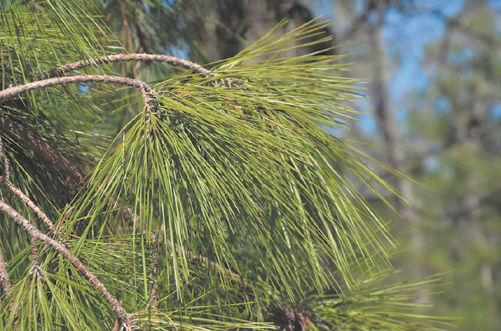
FIGURE 24-19 The fragrance of a pine forest is due to the volatile terpenes given off by the needles. Numerous varieties of terpenes exist, and many are important components of the flavors we enjoy in foods. This is long-leaf pine, Pinus taeda.
Plants that Provide Flavor: Herbs and Spices
Herbs and spices are plants with such strong, enjoyable flavors that we use them in such small quantities they provide almost no nutrition. Hot chili peppers and jalapeños are rich in vitamin C but we could never try to fulfill our daily requirement of this by eating jalapeños or drinking hot sauce. Cinnamon is wonderful in so many foods, but it is impossible to eat a teaspoonful of pure ground cinnamon all at once. These strong flavors evolved as chemical defenses that deter herbivores from eating plants. Although we use only a few dozen species of plants as herbs and spices, other plants are not defenseless: Leaves of pines, oaks, irises, and almost everything else have such strong, bitter, or unpleasant flavors that we do not eat them in even small quantities.
Many of the flavors we enjoy are based on just a few classes of chemical compounds, each class having many different chemical members. Terpenes make up one of the largest classes, there are thousands of types, and they all tend to have the aroma of conifer needles and citrus fruits (FIGURE 24-19). Terpenes are volatile; they evaporate at room temperature so they often have a strong aroma that affects the fragrance of an herb or spice. Phenols are another large class of compounds but with more varied qualities to their flavors and aromas. They provide the dominant flavors of thyme, oregano, cloves, and cinnamon, as well as vanilla. Each is so distinctive you would never confuse one for the others, and the flavors of each result from the presence of several to many different phenolics as well as other compounds. Other flavors result from alkaloids (black pepper) and lipids (cloves, mints).
Many plant species contain flavorful compounds, but several families have distinctive metabolic pathways that result in certain compounds that characterize the family. For example, the mint family (Lamiaceae) produces menthol, which is especially abundant in peppermint (Mentha piperita) and spearmint (Mentha spicata); other herbs in this family are basil, marjoram, oregano, sage, and thyme (FIGURE 24-20). The dill family Apiaceae produces the oils we enjoy in dill, anise, caraway, celery, cumin, coriander, and fennel (FIGURE 24-21). This family also has poison hemlock (Conicum maculatum), which is extremely deadly. The mustard family Brassicaceae is a large family of herbs and spices that have a particular enzyme and substrate (myrosinase and sinigrin) that produce the pungent chemical allyl isothiocyanate, found in mustard, horseradish, and wasabi.
The following are several particularly important herbs and spices.
Hot peppers, also called chili peppers, belong to the genus Capsicum, and almost all the numerous types of hot peppers used around the world are varieties of just one species, Capsicum annuum (FIGURE 24-22). This is a member of the nightshade family Solanaceae, which also contains potatoes, tomatoes, and eggplant. The pungency or “hotness” of hot peppers results from the chemical capsaicin (pronounced cap SAY sin). Its metabolic pathway is controlled by a single gene, and if both alleles are inactive, as in bell peppers, there is no capsaicin. But if a plant has one or two active alleles, various amounts of capsaicin are produced and you will know it immediately. Pungency is measured by the Scoville scale. The capsaicin of a pepper is extracted with alcohol; then a small amount of extract is added to a large amount of water. Several people are asked to taste the water to see if they detect the capsaicin. If not, more is added just to the point at which people detect it; that dilution ratio is the “heat” of the pepper in Scoville heat units. Bell peppers have a value of 0.0 Scoville units (SHU), and the hottest pepper known, a variety called Bhut Jolokia, has a value of 1 million SHU: If 1 mL of extract is added to 1 million mL of water, people would taste it. That would be 20 drops in 264 gallons or water. Anaheim peppers have 500 to 2,500 SHU, jalapeños have 2,500 to 8,000 SHU, and serranoes can reach levels of 23,000 SHU. Capsaicin is soluble in alcohol and lipids, so if you bite into one that is too spicy, you can calm the burning sensation with beer, wine, or a margarita; milk or cheese also help but water does not. Hot peppers are bright red or yellow when the seeds are mature; the color is a signal to birds, who do not react to capsaicin and who thus eat the fruits and spread the seeds throughout the habitat. Capsaicin is the active ingredient in pepper spray and bear spray.
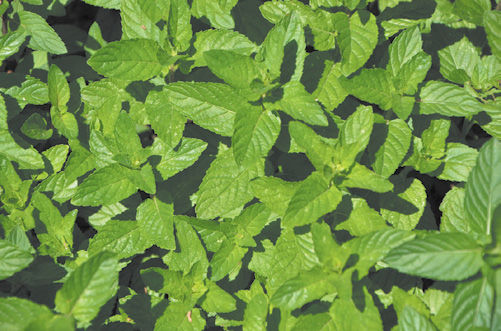
FIGURE 24-20 Spearmint, Mentha spicata, produces abundant amounts of fragrant menthol and various oils. We eat the leaves as a garnish—they are too powerful for most people to eat them as a salad—and the oils can be extracted by boiling the leaves and then allowing the oils to rise as the water cools.
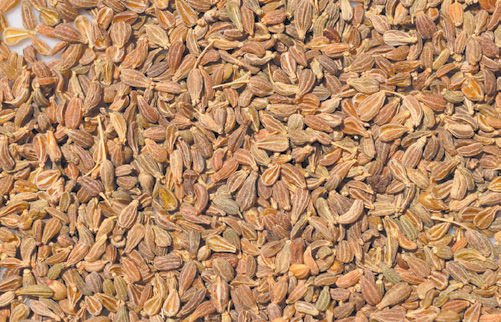
FIGURE 24-21 Anise, Pimpinella anisum, is one of the many members of the dill family that we use as a spice. Each of these fruits contains oil cavities that contain the flavorful oils. Anise gives a flavor similar to licorice (true licorice flavor is produced by the roots of a legume, Glycyrrhiza glabra).
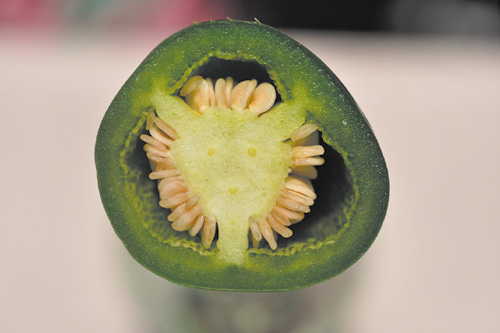
FIGURE 24-22 Jalapeño peppers are closely related to bell peppers (both are Capsicum annuum), but whereas bell peppers have no capsaicin, jalapeños have plenty. Some people claim that only the seeds are hot, not the fruit wall itself. But take a close look at the translucent bumps on the inside of the fruit wall—those will get your attention.
Capsicum peppers are native to the Americas; they were introduced to Europe and the rest of the world only after Columbus’s voyages. Since that time, Capsicum has become a fundamental component of many types of cuisine world wide: The spicy dishes of China, Thailand, and India, even such national dishes as Indian curry and Hungarian paprika, rely on Capsicum from the Americas.
Numerous savory herbs originated in Europe. Many are leaves of the mint family Lamiaceae, which includes mint, spearmint, peppermint, basil, sage, rosemary, and oregano (FIGURE 24-23). These leaves are harvested and used fresh, or they may be dried and still retain their flavor and aroma. The dill family Apiaceae also provides many savory spices such as anise, caraway, celery, coriander, cumin, dill, and fennel. We typically refer these as seeds, but actually they are small fruits that each contains a single seed. The fruit wall contains oil glands that produce and store flavorful oils.
The seeds of mustard must be slightly processed to obtain its pungent mustard oil, allyl isothiocyanate. While the seeds are intact, they contain an enzyme myrosinase located in the cytoplasm of special cells (myrosin cells) whereas its substrate sinigrin is located in vacuoles. As long as the seed is undamaged, the two cannot interact and there is no mustard oil. But when an herbivore bites into mustard seeds, or when a chef grinds them in water, the enzyme and substrate react, producing mustard oil. This compound is dangerous to plant cells themselves, so mustard oil is not produced until the plant is actually under attack. In the kitchen, the ground mustard seeds are allowed to sit in water just a few minutes if a mild pungency is desired, or up to 30 minutes or longer for a stronger flavor. Vinegar (dilute acetic acid) is added to stop the reaction and hold the pungency at the desired level.
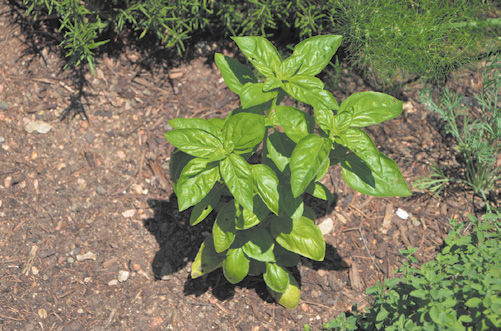
FIGURE 24-23 Basil, Ocimum basilicum, is a member of the mint family, Lamiaceae. Its leaves, either fresh or dried, are used as a spice, and basil is one of the key ingredients of pesto.
Cinnamon is the dried bark of large trees native to Southeast Asia. In commercial plantations, saplings about 3 years old are cut back almost to the ground so that only a few strong shoots grow upward rapidly. Once they are several meters tall, the outermost bark is scraped off, then the remaining inner bark (secondary phloem) is tapped evenly with a hammer. Afterward, the inner bark is peeled off and allowed to dry. Peeling must be done by an expert, otherwise the vascular cambium will be damaged. The genus Cinnamomum, in the laurel family Lauraceae, has several species, but only C. zeylanicum is considered to be true cinnamon. The other species, C. cassia, C. burmannii, and C. loureirii, also produce a cinnamon flavor but most experts consider these three inferior to the flavor of C. zeylanicum, and they refer to them as cassia rather than as cinnamon. However, the U.S. Department of Agriculture (USDA) allows all four to be sold as cinnamon. Cassia is less expensive than true cinnamon, so although you may have eaten many cinnamon rolls in your life, there is a good chance you have never actually eaten true cinnamon (FIGURE 24-24).
Cloves are the unopened flower buds of an Indonesian tree Syzygium aromaticum in the myrtle family Myrtaceae. The buds must be picked by hand just as they change from green to light pink and before they open. If picked too early, they do not contain their characteristic fragrant oil eugenol; if picked too late the buds fall apart and are useless. Consequently each tree must be examined and harvested at least four times per year. The buds are then merely dried and are ready for use. In addition to using the buds directly in baking, eugenol is extracted from much of the harvest and is used not only as a flavoring but also as an oil to dissolve certain stains used in microscopy. Eugenol also has strong antimicrobial properties and consequently is used to both flavor and preserve products.
There are few Westerners who do not eat black pepper (Piper nigrum) every day (FIGURE 24-25). Black pepper is one of our oldest spices: It was used in India as early as 4,000 years ago. It was part of the embalming process of ancient Egyptians: Pepper corns were placed between the wrappings of Rameses II, mummified in 1213 BCE. Romans and Greeks also used pepper extensively, as have all Europeans since. All pepper, as well as cinnamon and other spices from Southeast Asia, had to be imported by caravan through the Middle East, and consequently was typically more expensive than an equal weight of gold. A desire to find a cheaper way to import pepper and other Asian spices was the basis for Columbus sailing west.
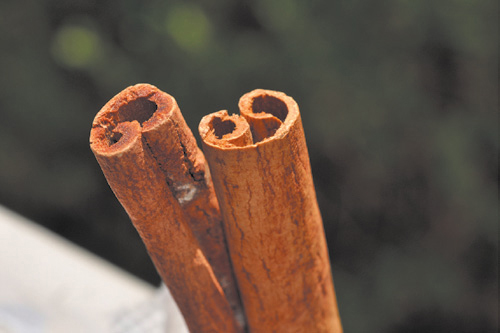
FIGURE 24-24 The cinnamon we eat is pure bark, one of the very few examples of a bark used for food.
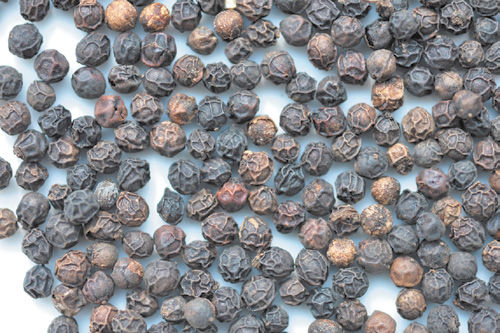
FIGURE 24-25 These peppercorns are the whole fruits of Piper nigrum. They are black because they had been allowed to “ferment” for a short time after being harvested, a process that alters and intensifies their flavor.
Plants of Piper nigrum are vines cultivated on poles or trellises. Its fruits are drupes, similar to a tiny peach, with a soft fleshy epicarp and mesocarp surrounding a stony endo-carp that protects the embryo. Peppercorns are harvested at different stages of maturity, depending on the type of pepper desired. For “green pepper,” they are harvested while still green, then either pickled in brine or freeze-dried to maintain their color. For “black pepper,” fruits are allowed to mature on the plant and are picked after they turn yellow. They are boiled briefly then piled together and allowed to “ferment” slightly. This causes them to turn black, and it intensifies their flavor, which is predominantly the alkaloid piperine (FIGURE 24-26). After fermentation, the fruits are dried and then are referred to as peppercorns, the product we put into our pepper grinders. Many of us buy black pepper that has already been ground at a factory, but as soon as peppercorns are ground, the increased surface area exposed to oxygen allows the flavor to weaken with time. For “white pepper,” fruits are allowed to mature fully, then stored in quiet, open water for several weeks. Fungi attack the fleshy soft parts and break them down; this process is called “retting” and is often used to separate the hard parts of plant material from softer parts. After retting, the softened flesh is washed away, leaving only the white endocarp and enclosed seed.
Vanilla is produced by a long, complex processing of the fruits of an orchid, Vanilla planifolia. The vanilla orchid is a large, strong vine that must climb, so vanilla plantations are fields of small trees with vanilla vines planted at the base of each tree. To maintain quality, vanilla plants are propagated vegetatively as cuttings from vines that are known to produce vanilla with the best flavor. Pieces of vine with about six leaves are planted at the base of a tree; later an uppermost bud becomes active and climbs upward, anchored to the tree by adventitious roots. Once the vine grows too high to be reached easily by workers, it is bent downward and allowed to start growing back up again. The bending stimulates the plants to flower earlier than they normally would; because of the bending, all flowers and fruits are low enough to be manipulated easily. This is necessary because a lot of manipulation is needed. The natural pollinator, a bee native to Mexico, is very ineffective, so every vanilla flower must be pollinated by hand. A plant produces many large white flowers each year, but only five or six are pollinated and the rest are allowed to wither so that the plant will not be overstressed by supporting too many fruits. Each fertilized flower produces a single long “vanilla bean” that resembles a slender green bean (FIGURE 24-27). When the tip of the fruit turns yellow, it is picked by hand; each plant must be checked frequently so that no fruit overripens. The harvested fruits are boiled for just a few minutes, long enough to kill the fruit but not so long as to denature critical enzymes. The enzymes modify the fruit such that the proper flavors and aromas develop. The beans are laid in the sun for several hours, then wrapped tightly in wool blankets, which in turn are placed overnight in wooden boxes. There, the beans “sweat.” The next day, they are placed in the sun again, and the process is repeated every day for 10 days. Finally the vanilla beans are placed in an airtight wooden box for a month or more, during which final flavor development occurs. All this effort produces a compound called vanillin as well as at least 170 other chemicals that contribute to the unique flavor and aroma of vanilla. Vanillin can be synthesized artificially; it must be labelled as “artificial vanilla” instead of “vanilla extract.”
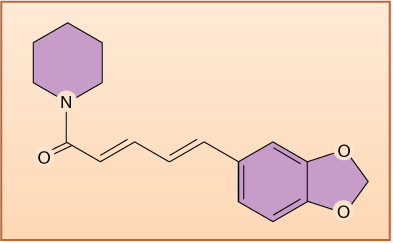
FIGURE 24-26 Chemical structure of piperine, the primary flavor of black pepper.
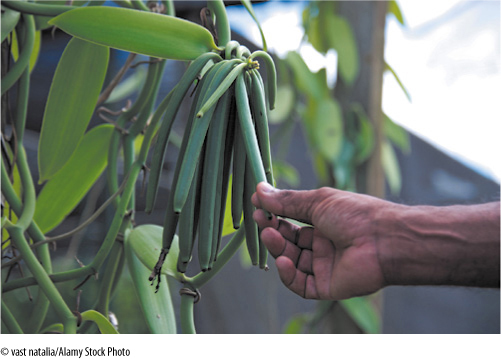
FIGURE 24-27 Although called vanilla “beans,” these are actually the dried, fermented fruits of an orchid, Vanilla planifolia. Vanilla flavor is so important to us that, pound for pound, vanilla beans are one of the most expensive foods we might ever buy.
Chocolate is produced from the seeds of Theobroma cacao, a small tree native to Mexico and tropical America. Archeological evidence indicates that chocolate was used as early as 3,100 years ago, and was well known to Mayans, Aztecs, and other Mesoamericans. There was no sugar in the Americas at that time, so chocolate was mixed with chili peppers, achiote, and vanilla to make a bitter drink known as xocoatl. Drinking hot chocolate became fashionable in Europe shortly after Columbus’s voyages, but at that time it was bitter, oily, and extremely filling. Our modern milk chocolate and cocoa were invented in the 1800s.
The conversion of Theobroma cacao seeds into chocolate is an extremely complex process. The seeds and their surrounding pulp are removed from the fruits and placed into a large pile such that the pulp ferments (FIGURE 24-28). The word “ferment” is used in processes such as this to indicate any process in which either microbes or the plant’s own enzymes work in conditions with little oxygen. It is not the same as anaerobic respiration described in Chapter 11. The objective of having a large pile of cacao seeds and pulp is to impede the entry of oxygen into the pile, even though the surface is exposed to air. Yeasts in the pile act on the pulp, changing sugars to alcohol; after a few days, conditions in the pile change such that lactic acid bacteria flourish, displacing the yeasts and causing a different set of enzymatic reactions to proceed. After a few more days, the pile is turned so that all parts are exposed to oxygen; this encourages acetic acid bacteria while inhibiting lactic acid bacteria. The full development of the proper flavors and aromas—and the elimination of unpleasant ones—depends on these three distinct fermentations occurring in the correct sequence and duration. After fermentation, the beans are dried and can be shipped to factories from the plantations. The dried seeds are now called cacao nibs. Although Theobroma cacao is native to tropical regions of the Americas, West Africa is now the world’s leading producer of cacao nibs.
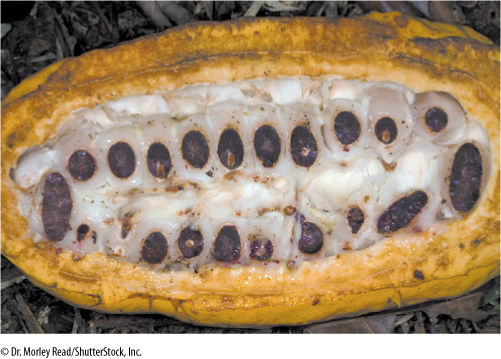
FIGURE 24-28 Each fruit of Theobroma cacao is large and has multiples seeds, each surrounded by a thick pulp. The seeds and pulp are carefully fermented, and then later the seeds are roasted and ground to make chocolate.
In the factory, cacao nibs are converted to chocolate. First, the nibs are roasted at a precise temperature for up to an hour; roasting must be controlled by an expert so that the nibs neither scorch nor come out under-roasted. They are then ground into a coarse, oily substance called chocolate liquor that resembles the coarse peanut butter you can grind for yourself in natural food stores. You have probably tasted chocolate liquor: It is mixed with a fat to make it solid, then is sold as “unsweetened chocolate” or “baking chocolate”; this pure form of chocolate is usually too bitter to be eaten as is. Much of the chocolate liquor is pressed to separate the liquid cocoa butter from the dry cocoa solids. Notice the change in spelling: Prior to pressing, the material is “cacao” and afterward it is “cocoa.” The Aztecs never pressed their chocolate; that was a step invented in Europe in the mid-1800s. Pressing into separate components allows us to produce various types of chocolate with specific flavors and textures. Most of the chocolate we eat is produced by adding some cocoa butter to chocolate liquor, along with sugar. To obtain “milk chocolate,” milk solids (powdered milk) are also added with the sugar. Some cocoa solids are ground and sifted, then sold as cocoa powder. With such complex processing, things can go wrong, and expert knowledge and experience are required to guide the production of quality chocolate; much is unusable because it ends up with flavors such as “burnt,” “hammy,” “moldy,” “earthy,” and others.
The flavor of chocolate is the result of many chemicals. Two important components are theobromine and serotonin. Theobromine is an alkaloid chemically similar to caffeine and is a mild stimulant. Serotonin is a neurotransmitter that our own nerve cells produce; it is the means by which certain nerve cells communicate with others, and it may be that chocolate gives us a sense of pleasure and well-being because its serotonin directly acts on our central nervous system.
![]() Plants that Provide Drugs
Plants that Provide Drugs
Many plants contain chemicals that are so toxic it would be dangerous to try to even a nibble. Poison ivy (Toxicodendron radicans), strychnine tree (Strychnos nux-vomica), death camus (Zigadenus), wolfbane (Aconitum), and suicide tree (Cerbera odollam) are examples to avoid. As natural selection causes the evolution of chemicals that defend plants against animals, certain chemicals that interact with nerve cells have been particularly effective. Devil’s trumpet (Datura stramonium) contains atropine that causes rapid heart beat, hallucinations, and seizures, often resulting in death. Strychnine disrupts movement of chloride ions in the nerve cells of our spinal cord and brain, and aconitine interferes with sodium metabolism in our heart.
A number of plants contain psychoactive compounds that are mild enough that people consume them for pleasure. Some, such as tea, coffee, and marijuana, seem to be more or less harmless, even when used for years. Others are deadly, but they kill us so slowly—and are so addictive—that many people use them despite knowing these plant products will seriously harm their health and probably kill them. Examples are tobacco, opium, and cocaine.
Tea is prepared from young leaves of Camellia sinensis, large bushes in the family Theaceae native to Southeast Asia (FIGURE 24-29). The bushes are trimmed for two reasons. First, it keeps them short enough that the tea leaves can be harvested by hand; second, trimming removes shoot apical meristems, thereby breaking apical dominance and causing many buds to grow out, thus producing valuable leaves more rapidly. After being picked, tea leaves are steamed for about 1 minute; then they are rolled or pressed to disrupt their cells, which allows their enzymes to oxidize various compounds and create desired flavors. When fresh, tea leaves contain phenols, which are extremely astringent (they make your mouth pucker), and enzymatic oxidation destroys some of the phenols. This step is called “fermentation” even though oxygen is present. For green tea, as much natural flavor as possible is desired; fermentation is brief, then the leaves are dried, chopped, and are ready for use. For black tea, leaves ferment for several hours before they are dried. This allows the astringent phenols to combine into large polyphenols that are neither bitter nor astringent, and that give tea its rich brown color. Also, enzymes alter other molecules, making them more volatile and giving black tea a stronger aroma than green tea. The final step of tea processing is when we make an infusion: We pour hot water over the tea leaves to extract their flavor molecules, then we discard the leaf material and drink the water (FIGURE 24-30). As with coffee, the many different types of molecules that produce the complex flavor of tea each has a different solubility in water; some dissolve more rapidly in cool water, others in tepid water, and still others in boiling water. By choosing the temperature of your water carefully, and the length of time you steep the leaves, you affect the mixture of compounds in the tea you drink.
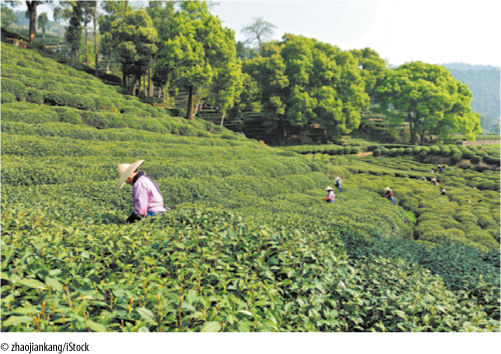
FIGURE 24-29 Tea leaves are harvested from bushes of Camellia sinensis that have been trimmed to keep them short and to make them produce more buds and leaves. Only young leaves are harvested; old leaves are left on the plant to carry out photosynthesis and keep the plant healthy.
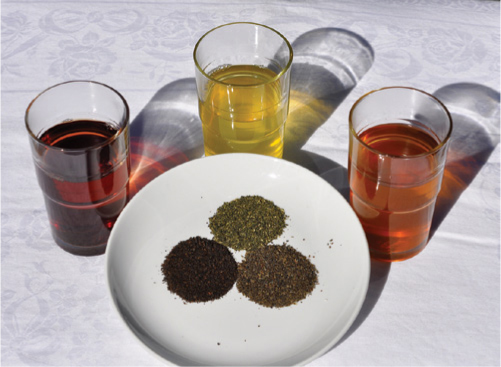
FIGURE 24-30 All three teas here are leaves of Camellia sinensis. The one in the center is green tea, in which the leaves are allowed to ferment only briefly. For black tea, on the left, the leaves are fermented longer to alter the flavor and reduce the astringency. For oolong tea, on the right, the leaves are fermented an intermediate amount of time.
All true teas are made from just one species, Camellia sinensis. Earl Grey tea is black tea flavored with an oil extracted from the rind of bergamot oranges. Chai tea is flavored with numerous spices including ginger, cardamom, and several others. Herbal teas are made from various plants other than C. sinensis. Herbal teas contain dried leaves and sometimes also twigs or flowers and are prepared as infusions. One of the benefits of herbal teas is that they typically lack caffeine, which is a stimulant, and so are more soothing and less diuretic (they do not give you the urge to urinate). Plants of C. sinensis have been cultivated and selected for thousands of years, and we are certain their leaves are not toxic. In contrast, anyone can chop up the leaves of any plant and call it herbal tea; few of these have been in use for more than a few years and we really do not know what their long-term effect might be. There have been several cases in which new types of herbal tea have been so toxic they were discontinued quickly. Unfortunately, there may be many that are mildly toxic and their harmful effects might not be discovered until many people have drunk them for years. When trying any plant product unfamiliar to you, please keep in mind that plants are very adept at hurting animals.
Coffee is an infusion prepared with the roasted seeds of two species of small trees. Coffea arabica has the richer flavor, but seeds of C. canephora variety robusta have more caffeine and better body. The seeds are called “coffee beans,” but these are not legumes, they are in the family Rubiaceae. After harvest, beans are separated from pulp and then are cleaned and dried; the resulting green coffee beans are sufficiently stable to be shipped to market. Roasting is the crucial step in developing the flavor of coffee beans. Roasting is carried out at temperatures between 188°C to 282°C (370°F to 540°F) and may last as little as 3 minutes to as much as 30 minutes. As with tea, the shorter time results in less alteration of the flavor, so differences in cultivation are detectable. Longer roasting causes starches to break down into sugars that then caramelize, producing the dark color of roasted coffee (FIGURE 24-31). Roasting also brings oils to the surface of the beans and converts them to various forms, one of which is caffeol, the oil that gives coffee its characteristic flavor and aroma. Roasting also breaks down caffeine: Dark, rich beans have less caffeine than light, mild ones. It is best to roast and grind coffee just before brewing: The flavor molecules produced by roasting are unstable and break down quickly, especially if exposed to air.
Colas are soft drinks (as opposed to hard drinks with alcohol) that originally contained extracts of the seeds of Cola trees, which are related to Theobroma cacao, the source of chocolate. The seeds are called kola nuts (with a “k”) and have a high concentration of caffeine. The drink was immediately popular; the original soft drink, Coca Cola, contained both cocaine from Erythroxylum coca and caffeine from kola nuts. After several years the use of cocaine was stopped, and now kola nuts are not used either. Cola drinks do have caffeine, but at present it is obtained as a by-product of decaffeinating coffee.
Alcoholic beverages such as beer, wine, and hard liquor (such as gin, tequila, rum, whiskey, and others; all are concentrated by distillation) act directly on our nervous system, depressing it. There are many types of alcohol, but the only type that should be present in any alcoholic beverage is ethyl alcohol (ethanol) produced by yeasts as they anaerobically respire the sugars present in barley, grapes, corn, and other sugary or starchy plants. It is never a natural, defensive compound. Alcoholic beverages are discussed in Chapter 11.
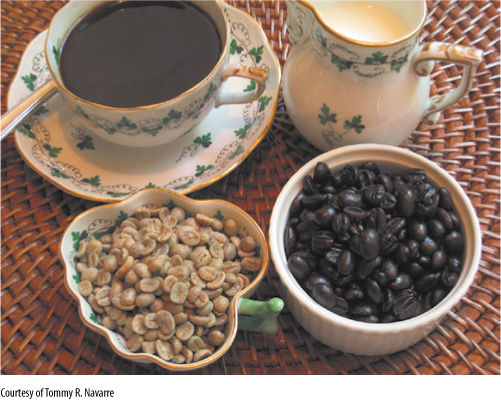
FIGURE 24-31 These coffee beans (Coffea arabica) have been roasted to alter their flavor, caramelize the sugars (this gives their dark color), and to bring oils to the surface. Before roasting, they were green, astringent, and had much more caffeine than now.
Tobacco contains the alkaloid nicotine, which is both toxic and highly addictive. If you don’t smoke, don’t start. After a smoker inhales, nicotine-rich blood arrives in the brain where it causes a person to feel relaxed, alert, and calm. Nicotine affects us in many ways: It binds to several receptors in our central nervous system as well as in our sympathetic nervous system. In the brain it alters the levels of dopamine (one of our own natural neurochemicals) and in the adrenal glands it causes the release of epinephrine, a stimulating hormone. In addition, nicotine greatly increases the risk of cancer of the lungs, throat, larynx, and mouth. Pancreatic cancer is also increased.
Leaves of Nicotiana tabacum and N. rustica, both in Solanaceae, are used for smoking and snuff. In cultivation, plants of both species are annuals that quickly grow to about 3 m tall. When their large simple leaves are mature, they are harvested, dried, and cured by hanging them above a low fire. The heat removes some moisture, converts starches to sugars, and breaks down carotenoids. Cured leaves are then aged for as long as a year to allow their flavors to develop. Finally the petioles and large veins are removed; the leaf lamina is cut into strips for cigarettes, cigars, or snuff. Additional flavors may be added; some manufacturers add extra nicotine, which makes the tobacco even more addictive.
Tobacco harms farm workers as well as smokers. Each leaf is picked by hand one at a time as each matures, so workers must walk through the fields every day (FIGURE 24-32). Nicotine passes directly from the leaves onto bare skin, causing “green tobacco sickness.” In many countries, the harvest is carried out by children, who are exposed to damaging levels of nicotine while their bodies and nervous systems are still developing. Cultivating tobacco damages the soil as well. All crops remove minerals from the soil, but tobacco takes up phosphorus, nitrogen, and potassium faster than most other crops, depleting the soil and making it necessary to use large amounts of fertilizer. Finally, the curing process requires firewood; Brazil alone cuts as many as 60 million trees per year, just to cure tobacco.
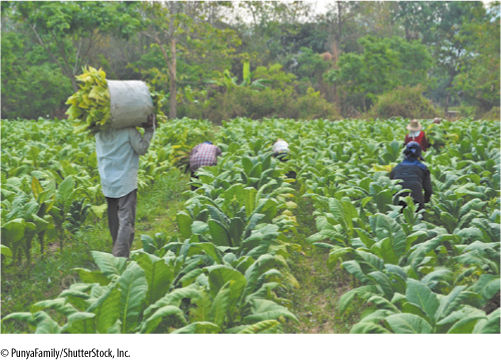
FIGURE 24-32 Most steps in the cultivation, harvest, and curing of tobacco involves manual labor in which workers must handle the tobacco. Nicotine and other harmful chemicals pass from the leaves into the workers’ skin, often resulting in permanent harm.
Marijuana is made from the leaves, twigs, and flowers of the large, leafy herb Cannabis sativa in the hemp family Cannabaceae (FIGURE 24-33). The species is dioecious: Some plants have carpellate (“female”) flowers; others have staminate (“male”) flowers. The psychoactive substance tetrahydrocannabinol (THC) is produced by secretory trichomes that are especially active on the carpellate inflorescences and nearby bracts. THC is a terpenoid that binds to specific receptors in our central nervous system and immune system. THC causes relaxation, a feeling of euphoria and introspection. Beyond these psychoactive effects, marijuana reduces the nausea caused by chemotherapy during cancer treatment. It also is effective against pain, glaucoma, and certain symptoms of multiple sclerosis. Cannabis sativa and THC have few proven deleterious effects. The secretory trichomes can be collected by rubbing the leaves and flowers, then sifting out the trichomes and resin particles, which are known as hashish or just hash.
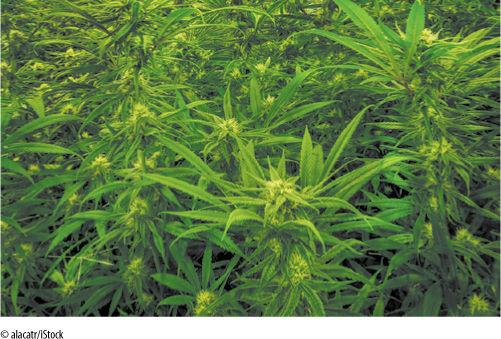
FIGURE 24-33 The psychoactive compound THC is present in leaves and stems of marijuana plants (Cannabis sativa), but is especially concentrated in carpellate flowers.
Opium poppies, Papaver somniferum, are an ancient crop: Sumerian writing from 5,000 years ago indicates that small balls of opium were used to relieve pain. Opium poppies are still cultivated in the Middle East, from Turkey to India, with Afghanistan being a major producer. A small fraction is used for legal medicinal purposes; the rest is sold as a recreational drug. Immature fruits of opium poppies have secretory canals filled with white sticky liquid latex called opium. The latex is harvested by cutting the fruit wall at just the right depth to open the canals without harming the fruit as it continues to ripen. Opium drips out and dries into a sticky mass that can be collected the next day (FIGURE 24-34). A single fruit can be tapped as many as 10 times, but three or four times is more typical.
Opium—the latex—contains many alkaloids, the most important being morphine and codeine. Morphine is an analgesic, which means that it blocks pain, and is effective against the severe pain caused by deep incisions, broken bones, surgery, and other trauma. Many people can become addicted to morphine, so its use in hospitals is limited, with patients being given morphine only if other analgesics are not strong enough. Patients are changed from morphine to non-addictive medicines as quickly as possible. Morphine can be chemically converted to heroin, which is a more powerful pain reliever than morphine but is also more addictive. Brief use of heroin is enough to cause total addiction, and the body quickly develops a tolerance for the drug, such that the user needs stronger and more frequent doses.
Opium poppies grow well in the poor soil and arid regions of the Middle East; for most farmers and village communities, the cultivation and sale of opium is by far their most lucrative source of money. The red poppies we cultivate in our gardens also contain small amounts of opium, but too little to be worth extracting. The poppy seeds used in baking contain traces of opium and can trigger a positive result in a drug test.
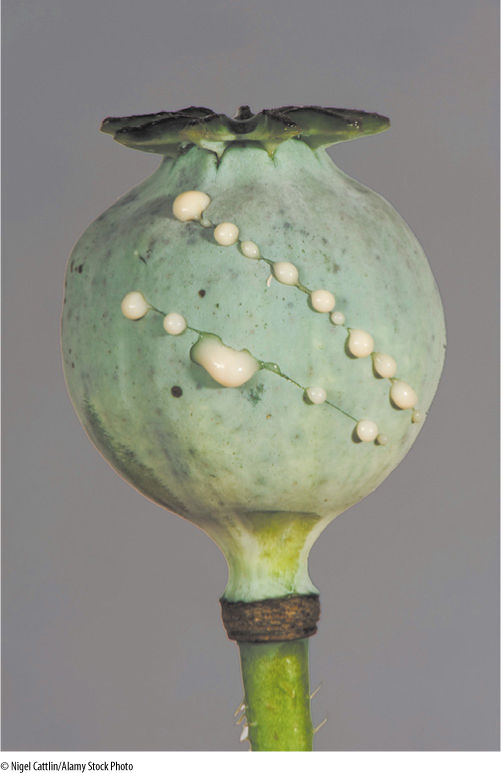
FIGURE 24-34 The white milky juice being tapped from these poppies is opium; it contains morphine and codeine.
Cocaine is obtained from small trees of Erythoxylum coca and E. novogranatense (both called coca) that grow in the Andes Mountains. As early as 3,000 years ago, indigenous people chewed coca leaves as a mild stimulant and to relieve hunger, thirst, pain, and fatigue. Even today, village markets and supermarkets in highland regions of Bolivia, Ecuador, and Peru sell coca, either as whole dried leaves to be chewed, or in tea bags for brewing coca tea. Coca tea is reputed to reduce the dizziness, headache, and fatigue of altitude sickness. Such usage provides a person with only a tiny amount of cocaine, about 0.002 gm. However cocaine is easily extracted from the leaves; it is then known as “coke” or it can be processed into “crack.” Cocaine amplifies the effects of our body’s own neurotransmitter dopamine. Dopamine is used by nerves that carry sensations of well-being, and cocaine enhances this feeling.
Cocaine is extremely dangerous and addictive. It has been glamorized in TV and movies as a recreational drug, but overdoses and deaths are common. As with all street drugs, you have no way of knowing what is actually in the package of drugs you are buying. Street drugs are often mixed with other, cheaper drugs so the dealer makes more profit, or especially with cocaine, the dealer will sell it at strong concentrations to get people addicted more quickly, and they become regular customers with a stronger need. Buyers are amateurs, dealers are professionals.
Until modern chemistry developed to the point at which it could synthesize medicines artificially, plants were the main source of all materials used to heal sickness. Many beneficial drugs have been discovered in plants, but at present most are no longer extracted from plants; they are synthesized instead, sometimes starting with simple chemicals, sometimes starting with complex precursors that are extracted from plants. For example, people have chewed willow bark to relieve pain; willows (various species of Salix) contain salicylic acid, a natural pain reliever, which is made more effective by converting it to acetyl salicylic acid, which we know as aspirin. At present, aspirin is synthesized artificially; none is extracted from willow bark any longer. See BOX 24-3 for another example. Some other plants with medicinal properties follow. The sap of an Aloe vera leaf provides excellent treatment for burns and sunburns; the freshly cut leaf surface is sterile and can be placed directly on injured skin. Similarly, a slice of fresh potato makes an excellent sterile, moist bandage if you are injured far from medical help. Cephaelis ipecacuanha provides ipecac syrup that is an emetic; it makes you vomit, which is useful if you have eaten something poisonous and it is still in your stomach. Catharanthus roseus (common periwinkle) produces two powerful anticancer drugs, vinblastine and vincristine. Podophyllum peltatum (mayapple) has alkaloids used to treat testicular, breast, and lung cancer. Cinchona officinalis provides quinine, a drug that kills the protozoans that cause malaria; inside our bodies, it kills the protozoans without harming us. The effective dosage of quinine is so bitter that many people refused to drink it at first despite being at risk of catching malaria; British medical workers discovered that is was more palatable if mixed with gin. Our gin and tonic alcoholic drinks today are derived from that medicinal use: Tonic water contains quinine. In areas where malaria is not a threat, such as most of North America and Europe, tonic water contains enough quinine to be slightly bitter but not nearly strong enough to kill malaria protozoans. Digitalis purpurea, a popular garden plant, produces digitoxin and digitalin: At medicinal doses, they stabilize the heartbeat if it has become irregular (FIGURE 24-35). Stronger doses are lethal.
Health departments and drug companies are still investigating plants across the entire world with the goal of finding other naturally occurring beneficial drugs. The first step is typically to talk to indigenous healers, medicine men, witch doctors, and curanderos, as these people know which plants tend to be useful. A second approach is to test plants that are closely related to species that are already known to contain beneficial compounds.
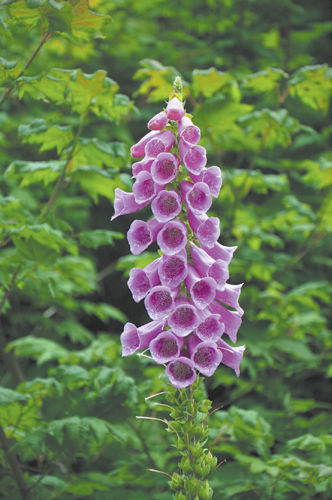
FIGURE 24-35 Foxglove, Digitalis purpurea, is the source of important drugs used to stabilize the heart’s rhythm; they are extracted from the leaves.
![]() Plants that Provide Fibers, Wood, and Chemicals
Plants that Provide Fibers, Wood, and Chemicals
Fibers
Plants excel at making bundles of fibers. The vascular bundles of young stems and leaves are usually protected and strengthened by phloem fiber caps (FIGURE 24-36). Many of the long leaves of monocots have so many fiber bundles they are stringy and it is difficult to tear the leaf across; leaves of palms, agaves, and many grasses are good examples (FIGURES 24-37 and 24-38). Hardwood trees (dicot trees) are strong because of xylary fibers in their trunks, branches, and roots; softwood trees (conifers) have wood composed of long tracheids that are strong, durable, and flexible like fibers. Phloem fibers in the bark of cedars, junipers, and many other trees provide a soft ropy material (TABLE 24-3).
Plants and People
BOX 24-3 Natural Drugs, Endangered Species, and Women’s Rights
The case of the anti-cancer drug Taxol is both complex and interesting. As part of a large-scale screening of thousands of plants in a search for anti-cancer drugs, The National Cancer Institute discovered paclitaxel in the bark of Pacific yew trees (Taxus brevifolia) in 1962 (FIGURE B24-3). Paclitaxel is effective against many types of cancer, such as those of lungs and pancreas, but it is especially important against ovarian and breast cancer: Few other drugs are effective against these cancers that afflict primarily women (men occasionally get breast cancer). Paclitaxel was patented as Taxol, and further research was begun immediately. So far, this seems like a good news situation, but it was discovered that even with the best extraction techniques, only a tiny amount of paclitaxel could be extracted from even large trees. The trees would be killed in the process, and 13,500 kg of T. brevifolia bark yield only 1 kg of paclitaxel. A full course of treatment for each woman with ovarian or breast cancer requires about 2 gm. To obtain enough drug to treat the many cases of cancer, it would have been necessary to harvest virtually all Pacific yew trees, which would have been an ecological disaster. We were faced with the unpleasant choice of allowing many women to die or of destroying ancient trees and forests. Remember that the scientific method can discover ways of doing things, but cannot address issues of values and ethics. Efforts to synthesize paclitaxel completely artificially, the way we now produce aspirin, yielded only tiny amounts of the drug. But other research discovered that a precursor to paclitaxel, 10-deacetylbaccatin, could be harvested in large quantities from the needles of various species of Taxus without harming the trees too badly, and 10-deacetylbaccatin could be artificially converted to paclitaxel. It was no longer necessary to choose between the rights of women for proper health care and the safety of trees and forests.
If the story ended there, it would be sufficiently satisfying. But it became even better, at least from a scientific point of view. Further research discovered that paclitaxel could be produced by growing Taxus cells in liquid culture mixed with the fungus Penicillium raistrickii. As it turns out, this fungus grows naturally and harmlessly inside yew trees (it is an endophytic fungus). It was suspected that perhaps the yew trees themselves do not produce paclitaxel; it may have been that when the drug was being harvested from bark, it was really being extracted from fungus cells growing in the bark. To investigate this, researchers are studying many species of endophytic fungus, especially those that grow inside species of Taxus, and techniques of molecular genetics have provided results that are exciting but still not understood. The fungi do contain certain key genes that code for enzymes necessary to synthesize paclitaxel, but so do the nuclei of yew trees. Especially intriguing is the fact that the DNA sequence of the fungal genes is very similar to the genes of Taxus. One possibility is that the fungi obtained their genes from their host trees, that there has been horizontal gene transfer from plants to fungi. It is also possible that the tree and the fungus together synthesize the drug more rapidly than does either one individually. Research is still continuing, the answer is not yet known.
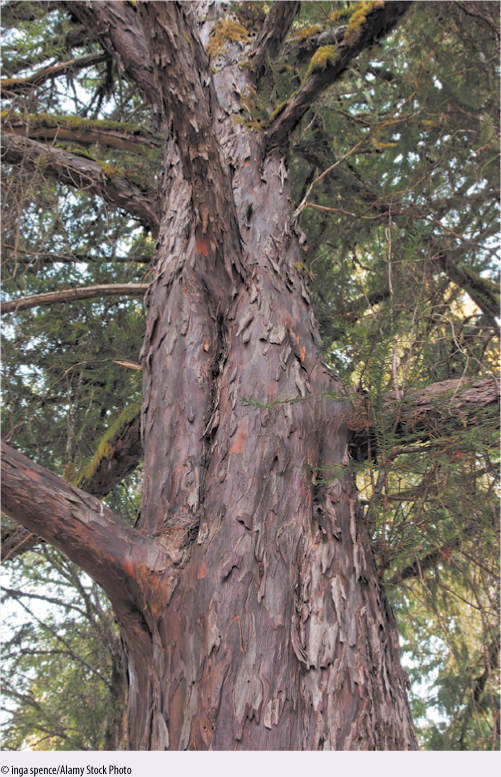
FIGURE B24-3 The bark of Taxus brevifolia is the source of Taxol, an important drug in the treatment of ovarian, breast, and lung cancer.
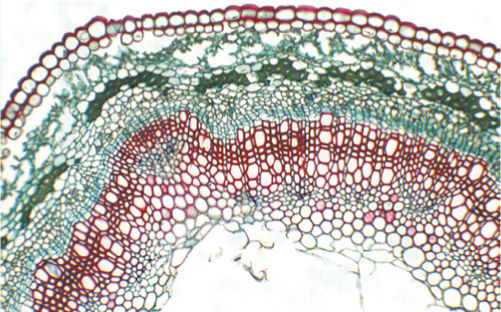
FIGURE 24-36 In many plants, vascular bundles of stems are accompanied by a cap of phloem fibers (dark green). Anatomically, each fiber is a single cell, but for textiles, the entire cap is extracted and called a fiber; consequently, a textile fiber is often composed of thousands of fiber cells.
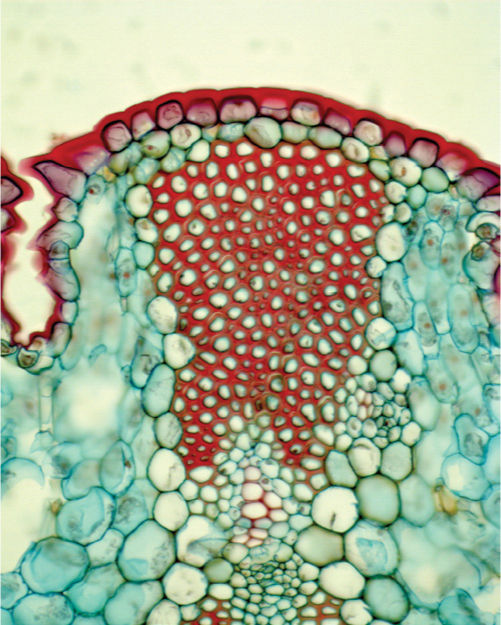
FIGURE 24-37 In many species of Yucca, bundles of fibers are located just interior to the epidermis. Because these have no vascular tissue, they are called fiber bundles rather than fibrovascular bundles, and because they occur in leaves, they are called hard fibers.
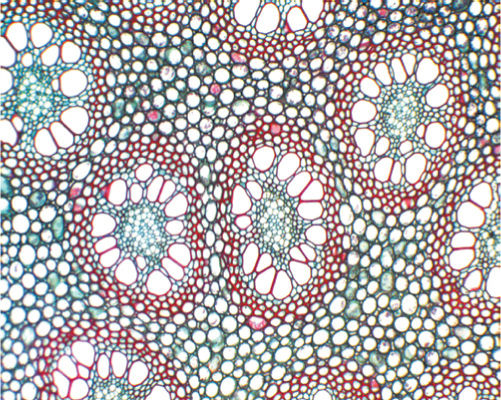
FIGURE 24-38 In many monocots, such as this stem of Juncus (commonly called a rush), vascular bundles are surrounded by fiber cells rather than just having a cap on one side, as is common in eudicots. These are called fibrovascular bundles.
Early humans with few or no tools could have used many of these plants. Young branches of willows are so flexible and strong they can be used to tie bundles of firewood together. Even young children learn to weave strips of plant material into flat mats; with some skill they can weave material into baskets, bowls, and ropes (FIGURE 24-39). With such simple techniques, fibrous plant parts can be used to make shelters, baskets for carrying or storing food, even rough clothing. If baskets are woven tightly and rubbed with pine resin or clay, they can be made sufficiently waterproof to store water. It did not take humans long to learn how to strip the useful fibers out of plants and convert them into finer material for careful weaving and construction. Even today we still rely on plant fibers in our daily lives.
TABLE 24-3 Types of Plant Fibers
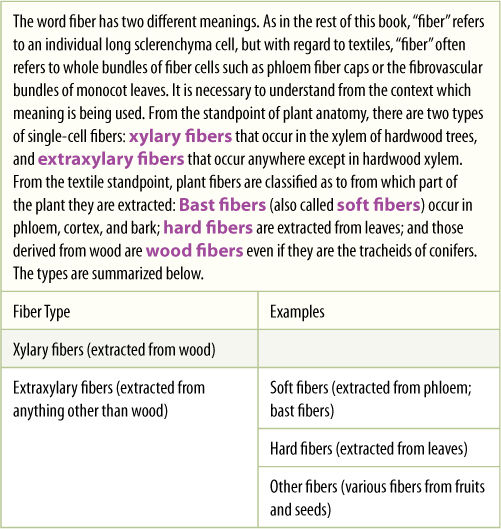
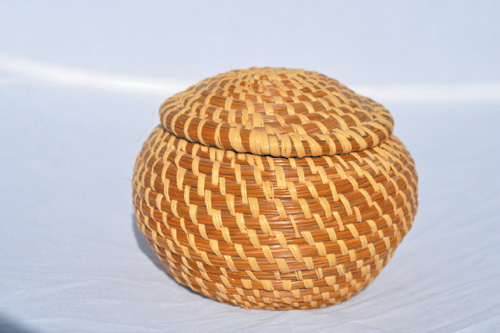
FIGURE 24-39 Needles of longleaf pine were used to weave this bowl and its lid. The textile fibers in this case are entire leaves that need no preparation whatsoever.
We use bast fibers (phloem fibers) from several diverse plant species today. Tall, slender shoots of Corchorus, an annual in the mallow family Malvaceae, supply us with the fiber called jute, which is tough, flexible, and resistant to being torn or cut. It is most often woven into a course cloth called burlap (FIGURE 24-40). Although we have many synthetic materials such as nylon and polyester, burlap offers the advantages that it is breathable and also will rot away. Sacks that hold wheat, potatoes, onions, and other crops must not trap the moisture produced by the slow respiration of the stored crop material and cause it to rot. Burlap allows moisture to escape while oxygen diffuses inward, keeping the crop material alive. Burlap is often used as a geotextile in which it is woven into a coarse, open, heavy fabric that can be laid on bare earth created by road construction, forest fires, and flooding. The geotextile holds soil in place long enough for seeds to germinate and extend their roots, gradually forming a network that stabilizes the soil (FIGURE 24-41). Over a few years the burlap rots away but by then the plants are well established as a solid ground cover. The permanence of artificial fibers would be harmful. Similarly, nurseries sell small trees with burlap holding a mass of soil around their roots. The trees are planted with the burlap still in place and as the trees become established, their roots initially penetrate the burlap; after a year or two the burlap has decayed and roots grow unhindered. A very new use for burlap is in composite materials. Burlap fibers or fabric is mixed with liquid resin, placed into a mold and allowed to harden; the resin provides durability and chemical resistance, the burlap provides flexible strength and resistance to fracture. There is a good chance the dashboard of your car contains burlap.
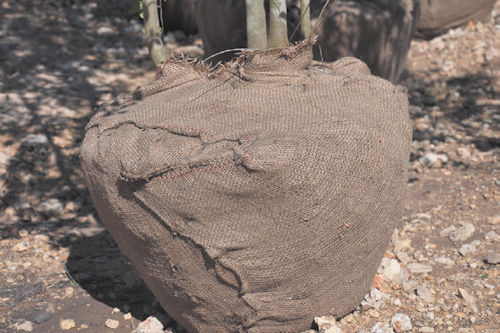
FIGURE 24-40 The soil around the roots of this shrub are being held in place by burlap, a cloth made of the natural fibers called jute. When the shrub is planted, the burlap will be left in place and soil added around it; the roots will grow through the burlap initially, and later the burlap will decompose and roots will spread in all directions with no hindrance.
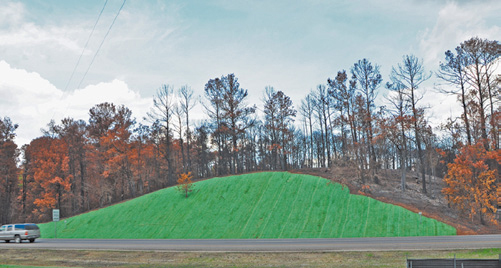
FIGURE 24-41 A fire destroyed the forest and shrubs in Bastrop State Park near Austin. Large mats of geotextile were placed on the bare soil of the road cut, protecting it immediately from erosion due to the matted layers of natural fibers, which break up rain drops before they strike the soil. The geotextile will decompose over several years, but by that time, grasses and shrubs will have become established, providing long-term stability against erosion.
Flax fibers are extracted from flax plants (Linum usitatissimum) and woven into linen cloth, one of the most ancient and desirable of all textile fibers. Flax fibers and stone tools have been found at an archaeological site that dates to 36,000 years ago in the Republic of Georgia. Linen cloth was used to wrap Egyptian mummies as much as 5,000 years ago; even today linen cloth is not only comfortable and beautiful, but also natural.
Ramie (Boehmeria nivea) is one of the strongest plant fibers known and its strength increases when wet. This makes it important for ropes and fabrics used around water, such as fishing nets, canvas, sail cloth, and ropes on ships and docks. Being a natural material, ramie is decomposed by fungi and microbes, so ropes and fishing nets must be periodically dried to kill microorganisms. This seems to be a disadvantage, and when polyester and nylon fishing nets were invented, fisherman immediately switched to them: They never have to be dried, they never rot. But it turns out that this is an ecological disaster. Fisherman put out large nets, fishing trawlers put out gigantic ones; if they become tangled or if a storm comes in while the net is still out, often the crew just cuts the net off and abandons it (FIGURE 24-42). As a result, thousands of nets now drift freely in the oceans, trapping fish, dolphins, whales, and other marine life, causing them to suffocate or starve. And because polyester and nylon do not rot, these nets may continue doing their damage for centuries. Many people believe that synthetic nets should be banned and replaced by nets woven from natural materials that decompose quickly.
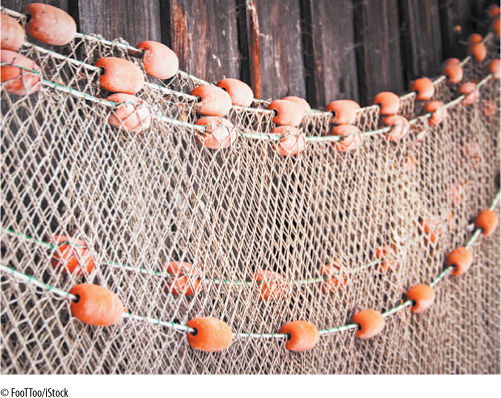
FIGURE 24-42 If large nets like these become hopelessly tangled, they are typically simply cut off and abandoned in the ocean. If made of natural fibers, they will gradually decompose, but if made of artificial fibers, they may float and trap sea creatures for years.
We are still searching for and domesticating useful plants. One of the newest is kenaf (Hibiscus cannabinus), a bast fiber plant being tested for use in making paper (FIGURE 24-43). Its fibers are naturally whiter than those of pine and they have less lignin. Two of the most polluting, expensive steps in making paper are bleaching and delignifying pine fibers (actually pine tracheids); if kenaf is suitable, paper manufacturing could become less damaging to the environment. Also, a given plot of land will produce about twice as much fiber if planted with kenaf as compared to the same plot planted with pine.
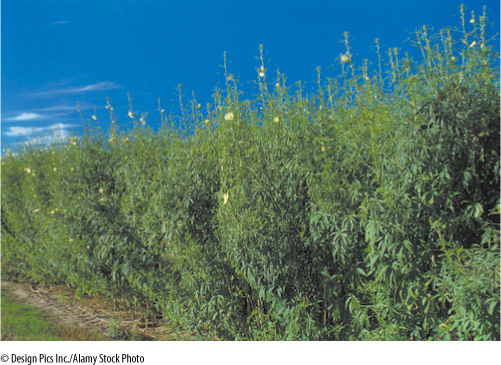
FIGURE 24-43 Plants of kenaf, Hibiscus cannabinus, quickly grow 2 to 3 m tall and can be harvested for fibers with many excellent properties.
Hemp (Cannabis sativa) is an excellent source of strong plant fibers. Cannabis sativa has long had two varieties, one high in the hallucinogenic THC and one with long fibers but no THC. Like kenaf, hemp plants grow rapidly and produce large amounts of strong fibers. Hemp fibers are used in composite materials as well as to strengthen concrete and adobe.
Only a small amount of textile fibers is hard fibers, fibers from leaves. The long, tough succulent leaves of the desert plant Agave sisalina provide fiber bundles and fibrovascular bundles called sisal (FIGURE 24-44). Leaves are periodically cut from the plant and the fibers are stripped out by crushing the parenchymatous mesophyll between them. The resulting bundles are rough and make a course cloth unsuitable for clothing but useful as a type of natural rustic carpeting. Coarse tough fabric is also needed as buffing cloth, filters, and the twine used to bind bales of hay, straw, and cotton. Agave sisalina can be cultivated in dry semi-desert areas and is a cash crop for many poor people in Africa (it is native to central America but now almost all cultivation is in Kenya). This is good for farmers who live in these harsh areas, but it results in the clearing of natural vegetation to have fields for a low-yield crop.
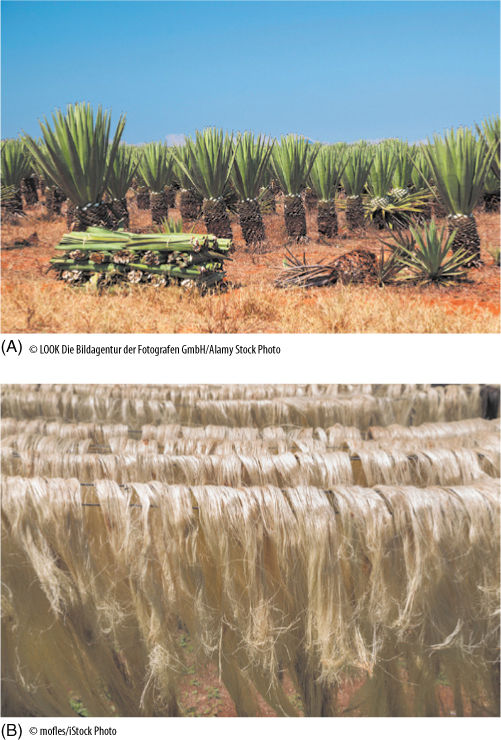
FIGURE 24-44 (A) Plants of Agave sisalina are cultivated in large plantations; each year the lowest, oldest leaves are harvested to obtain sisal fibers. (B) After fibers are extracted from sisal plants, they are hung over wires so that they can dry and be bleached by sunlight and oxygen.
Cotton fibers develop as trichomes on the seed coat, so they are neither bast fibers nor hard fibers (FIGURE 24-45). Cotton is by far the most important plant fiber commercially. The trichomes are very slender, only one cell wide, and very long, up to 5 cm in some varieties. The trichome wall is almost pure cellulose and thus is very strong and flexible; cotton fibers can be bent repeatedly without breaking: They can be washed, dried, folded, and ironed repeatedly without fracturing or crumbling. They can be dyed almost any color, and cotton cloth is so soft and comfortable it can be worn against the skin, even a baby’s skin, all day without causing irritation.
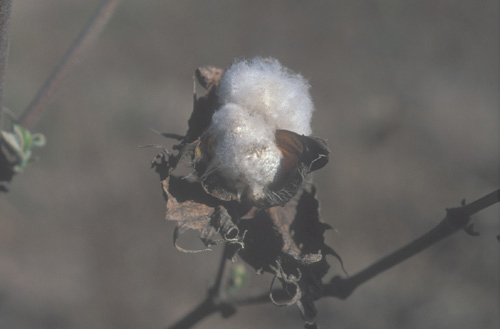
FIGURE 24-45 Cotton fibers are trichomes on the seed coat of cotton. Here the seeds have produced such copious amounts of fibers that the fruits have been forced open, as is typical of domesticated cotton. Formerly, the difficulty of separating the trichomes from the seeds was so time-consuming and difficult that it limited the use of cotton. The invention of the cotton gin by Ely Whitney greatly lowered the price of cotton and allowed the cultivation of cotton—and slavery—to expand greatly.
Cotton fibers are a good example of the way textile fibers are handled. Individual fibers are so short and fine they must be spun into thread. This is done by taking a jumbled mass of cotton fibers and attaching a few fibers to a heavy spindle; the spindle is allowed to hang, suspended by the few cotton fibers, and then the spindle is rotated so that its spinning causes the fibers to wrap around each other, forming a thread. As the spindle’s weight pulls downward, the thread pulls more of the tangled cotton fibers out of the mass, and the thread becomes longer. When done by hand, the spinner must feed tangled cotton into the spinning, elongating thread uniformly otherwise the thread will be thick and lumpy in some areas, thin and fragile in others. Needless to say, spinning cotton thread by hand required a great deal of time, patience, and skill.
Paper is produced in an amazing variety of types, qualities, and characters. Some is course and rough, such as in low-grade paper towels or newsprint (the paper of newspapers); others are fine, smooth, and white, such as printer paper. Most paper is made from the tracheids of conifers, especially pines, but now plantation-grown poplar (Populus) and kenaf are being used frequently. Making paper requires many steps. First, individual fibers are necessary rather than fiber bundles so the material must be broken down to separate the cells from each other. Cell walls must be delignified, otherwise they will not absorb water, ink or dyes. Unless the paper is to be brown, it must be bleached, and most papers have fillers added to fill the microscopic spaces so that the paper’s surface is smooth (FIGURE 24-46).
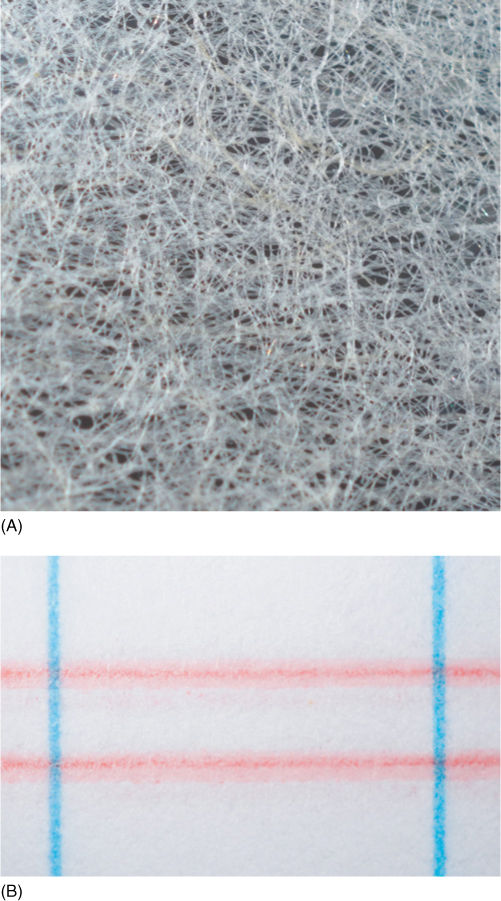
FIGURE 24-46 (A) This paper has only sparse fibers and no fillers at all: It would be unacceptable as paper for writing or printing. But this is paper for a tea bag, so high porosity and permeability are advantageous. (B) This notebook paper has many more fibers per square centimeter than the paper of tea bags, but they are difficult to see because so much filler, whitener, and dye have been added.
The simplest method for obtaining individual fibers is to just grind wood chips and tear the cells from each other physically. This is inexpensive and requires almost no dangerous chemicals, so it produces little pollution. But it damages the fibers and leaves the lignin and hemicelluloses intact. Paper made this way is coarse; it yellows rapidly and breaks down quickly, and dyes cannot produce bright, crisp images. But these are not problems for paper towels, absorbent papers, and newsprint.
Two chemical methods exist for digesting the middle lamella and obtaining fibers for paper: the sulfate method and the sulfite method. Almost all paper today is made by the sulfate method, which is also called the kraft method. This produces a long-lasting, stable acid-free paper that is especially important for books, magazines, and artwork. Chemists and engineers have refined the kraft method such that modern factories recycle most of their chemicals and produce little pollution. However delignifying fibers for paper is still a problem, and geneticists are trying to breed plants that have less lignin. The sulfite method was developed in the 1800s and was used for many years before it was discovered that it leaves traces of acid in the paper, causing it to eventually turn yellow and crumble. Unfortunately, millions of books and magazines were printed with sulfite paper by the time this problem was discovered, and now these books are deteriorating in libraries. The Library of Congress and other institutions with the financial resources are chemically treating these books to stabilize the paper and preserve the books, which are irreplaceable.
Paper can be recycled by simply agitating it in water until the fibers separate from each other. With each recycling the fibers become a bit more damaged and weaker, and some of the previous fillers and dyes remain, so the resulting new paper has a poorer quality. But low-quality paper is used useful for things such as egg cartons, packing material, and building insulation.
Chemicals
Chemicals such as waxes, resins, rubber, and drying oils are obtained from plants.
A drying oil has many carbon—carbon double bonds. If a drying oil is brushed onto a surface exposed to air, the double bonds allow the oil molecules to react with each other, forming a thin polymeric protective water-resistant film. Tung oil, linseed oil, and walnut oil are applied to find wood products to intensify their color, give them a glow, and to protect them from water and dust (FIGURE 24-47). Varnish is produced by mixing drying oils with resins such as amber, dammar, copal, or rosin along with a thinner such as turpentine. Synthetic sealers such as polyacrylamides and polyurethane are popular now because they harden into a protective coat within a few hours instead of days, and they produce a stronger film. But for fine products or art pieces made of wood, the natural drying oils are still preferred.
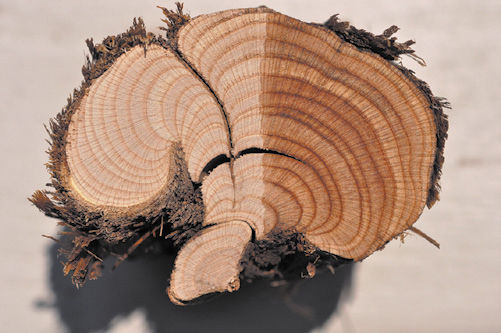
FIGURE 24-47 Wood of sagebrush (Artemisia tridentata) has an unusual, beautiful structure but its color is nondescript until treated with tung oil, a drying oil (on right). A drying oil or a varnish not only enhances color, it polymerizes into a tough coating that protects surfaces from dust and moisture.
Resins are sticky, viscous liquids produced by a variety of trees. The pitch that oozes from conifers is a familiar resin (FIGURE 24-48). Pine resin is a mixture of terpenes; these are released in abundance as pine wood is processed to make paper. Some of the resin is converted to turpentine; some is used to make artificial flavors and aromas similar to terpenes, such as artificial vanilla. If all terpenes are removed from resin, the solid sticky residue is called rosin; this is the rosin used to increase the friction on bowstrings of musical instruments and the shoes of professional dancers. A few trees produce resins valued for their aroma. Frankincense is the resin of Boswellia sacra and myrrh comes from Commiphora (FIGURES 24-49 and 24-50); both are in the family Burseraceae. Other resins used as incense are copal and dammar.
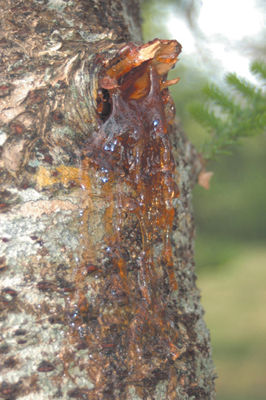
FIGURE 24-48 Almost all conifers produce resin, commonly called “pitch,” that oozes from wounds and broken branches. Pitch has been used both as an adhesive and to make baskets waterproof. It is extremely flammable, so conifer wood is good for starting campfires.
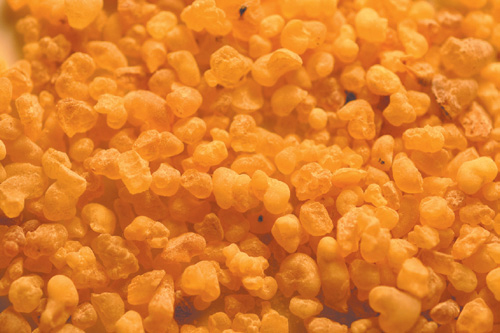
FIGURE 24-49 Frankincense pellets are the resin of small trees (Boswellia sacra) that live in Oman, Yemen, and Somalia.
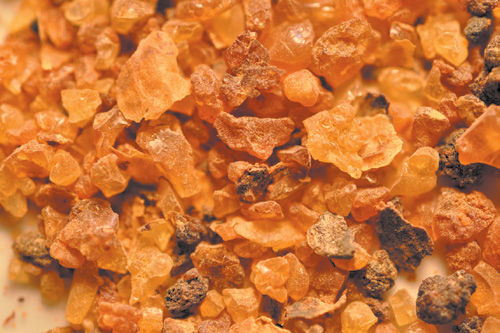
FIGURE 24-50 Myrrh pellets are the resin of Commiphora myrrha and several related trees.
All plant cuticles contain some wax, and various plants produce such large amounts it can be harvested. Leaves of the Brazilian palm Copernicia prunifera produce an abundance of carnauba wax as yellow flakes. The leaves are harvested and then beaten to dislodge the wax flakes. Carnauba wax produces a very hard, glossy surface and is used to polish automobiles, floors, furniture, and shoes. It is also used in candy, to make hard shells around chocolate so that it does not melt in your hand. It also makes dental floss slippery, and is used to give the proper texture to lipstick, eyeliner, deodorant, and other skincare products.
Euphorbia antisyphilitica is a slender stem-succulent, leafless plant of the Chihuahuan Desert in west Texas and adjacent Mexico (FIGURE 24-51). Its stems are covered with candelilla wax (pronounced can del EE yuh), a wax that can flex and bend without cracking, which makes it good for waterproofing canvas, boots, and many types of military equipment. The wax has been usually harvested by simply pulling up the entire plant and boiling it; the wax melts and rises to the surface of the water, where it can be collected. So much candelilla wax was used by American forces in World War II that E. antisyphilitica was almost harvested to extinction; it is protected now and is recovering but even so, the plants are still sparse now 70 years later, with low population densities. As the name suggests the plant was once used to treat syphilis but it was not effective.
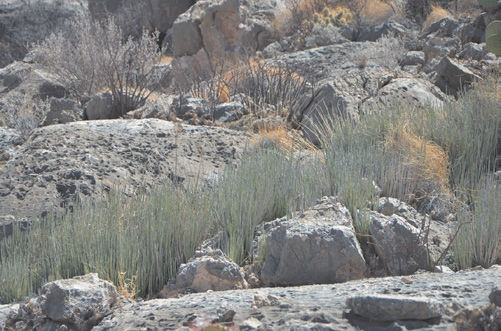
FIGURE 24-51 The gray-green stems in the center of the photograph are plants of Euphorbia antisyphilitica growing in Big Bend National Park in Texas. The stems are covered with a thick layer of epicuticular wax called candelilla wax.
Wood
Our early ancestors were limited in their use of wood by their lack of tools. Sharp stones can cut through wood, but that is slow and difficult and limited to slender pieces of wood. The discovery of bronze at about 36,000 years ago suddenly gave our ancestors sharp, durable saws, knives, axes, and planing tools that allowed early people to work larger logs and branches. Even so, obtaining beams and planks involved so much manpower that using large pieces of wood, or wood that was finely finished, was limited to temples and palaces. At present motor driven machinery makes it possible to harvest and shape even very large trees. Unfortunately this led to the cutting of almost all forests in Europe and North America, and at present the jungles of Brazil and Southeast Asia are being wiped out rapidly (FIGURE 24-52). If the U.S. government had not wisely established national parks and protected tracts of forest, we might not have had any truly mature trees in natural forests (these are called old growth forests, forests that have never been logged; FIGURE 24-53). As it is, there are many parts of the United States in which all large mature trees were cut down, not a single one is left. Because so many trees have lifespans between 300 and 1,000 years, these areas will not have truly mature trees for hundreds of years: Millions of Americans and Europeans for generations will never see a natural forest unless they visit Yellowstone National Park or one of our other Western parks. Lumber companies still apply to the U.S. government for permission to cut down old-growth forest and all too often the government grants that permission.
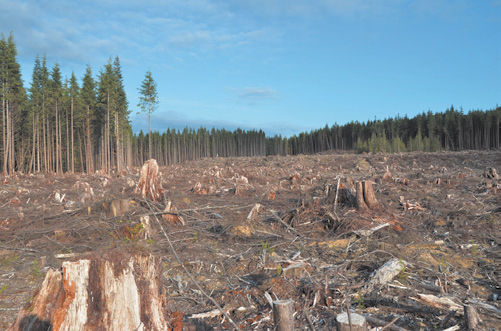
FIGURE 24-52 This is a clear-cut forest on the Olympic Peninsula in Washington State, just across the road from the boundary of the Olympic National Park. During clear cutting, everything is destroyed, even shrubs, wildflowers, and the topsoil itself. An alternative is selective cutting in which only the desired trees are harvested and all else is left in place. Clear cutting is cheaper. The United States is cutting its forests severely; usually we hear only about the destruction of tropical rain forests in Brazil and Southeast Asia.
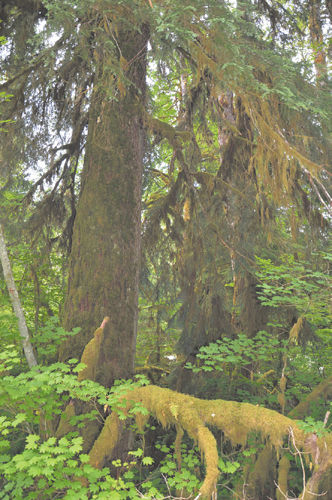
FIGURE 24-53 An old growth forest in the Olympic National Park; this area has never been cut for lumber nor mined for minerals. The forest contains trees of all possible ages, from seedlings to others many hundreds of years old. Also, dead trees are allowed to remain as they naturally would; these are important for birds that eat the insects and fungi that only inhabit dead trees.
Most lumber now comes from privately owned tracts of land or land where lumber companies hold long-term leases from the government. In those areas, saplings of the desired species are planted after an area has been harvested, with the result that very large tracts grow up dominated by just one species of tree, and all trees have exactly the same age. This superficially resembles a natural forest but it has none of the diversity of a natural forest: no understory trees; no shrubs; no ferns, wildflowers, mosses, or animals. A natural forest has many types of trees, and of varying ages; it also has some dead trees and some that are infected with insects—such trees and their insects are just the type that woodpeckers rely on.
Lumber companies do not cut down forests to be malicious; they do it because we buy the products made from those trees. We buy paper, lumber, and chemicals, and the harvest could be reduced if we would use the material more frugally or if we recycled paper and lumber. Artificial lumber is now available for fences, patio decking, outdoor furniture, and so on. By mixing hemp or kenaf fibers with resin or concrete, buildings can be constructed with less lumber. There is hope for our forests.
Much of the wood used for construction is sawn lumber. A log is sawn into beams, 2 × 4s, planks, and so on. To obtain long beams and planks, conifer trunks are preferred over those of dicot trees because conifers tend to have a long, straight trunk whereas dicots have so many angles it is impossible to obtain straight pieces of wood more than 1 or 2 m long. Dicot wood tends to be stronger than conifer wood, so dicot woods are preferred when short, strong pieces of wood are needed for furniture, chairs, cabinets, picture frames, baseball bats, and tool handles. Conifer wood is usually not strong enough for these uses.
Much of the conifer wood used for construction is now grown on plantations. These trees tend to grow quickly because they are planted at optimal spacing and are sometimes even fertilized. Under these conditions the tracheids tend to be wide and have thinner walls with less lignin, and there is more soft earlywood and less hard latewood. Also, modern commercial trees are harvested while they are so young they have not produced much decay-resistant heartwood. In contrast, lumber that was cut in the olden days from natural forests came from trees that were old and had grown slowly; most of each log was tough heartwood, and even the outermost sapwood too had thicker cell walls then do logs grown rapidly today. Consequently many old wooden buildings built in the 1800s and 1900s are still sturdy whereas newer buildings are much more fragile and tend to rot rapidly (FIGURE 24-54).

FIGURE 24-54 This home was built in 1877 from wood harvested from old growth forests in northeast Texas. Even though the wood planks and siding are 138 years old, they are still solid, much stronger than new homes being built with lumber from plantations. Of course, if every new home were built with old-growth lumber, every forest in the U.S. would need to be cut down.
Engineered wood is an alternative to sawn wood. If a tree is to be cut down for our use, then it is best to waste as little of it as possible. Producing sawn lumber is inherently wasteful because we are converting a tapered, conical log into a set of three-dimensional rectangular cuboids. Engineered woods are woods produced by gluing small pieces of wood together to make a new type of wood. Plywood is probably the most familiar: A log is placed in a giant lathe and rotated around its long axis while a knife cuts off a thin layer (a veneer) as wide as the log is long. This long, thin veneer is cut into large squares that are glued together in multiple layers to make either a thin flexible plywood or a very thick and sturdy one (FIGURE 24-55). To make a strong wood that resists shrinking and warping, the grain of each layer is oriented at right angles to the grains of the adjacent layers. To make a plywood that can be bent around a corner, the grain of each layer is parallel to that of all the others. Much plywood is used as large sheets in the construction of homes and offices, and its rough surface will be covered by siding, plaster, or wallpaper. More elegant plywood is made by covering the rough plywood with an outermost veneer of fine wood such as maple or birch. Making plywood uses almost the entire log with almost no waste; by selecting the proper glue, the plywood can be given specific properties such as being waterproof or especially durable.

FIGURE 24-55 Most plywood is used as large sheets in the construction of buildings, but recently designers have appreciated the beauty of its texture, and it is now often used in furniture.
Particleboard is an engineered wood similar to plywood but logs are simply chipped into particles rather than cut into veneer. The particles are then glued together to make a board of any desired size or thickness. Particleboard is weaker than plywood, and if it is made from sawdust particles, it can be crumbled by hand. But often strength is not needed, and by covering particleboard on each side with a veneer of wood or plastic, the composite structure can be very strong.
Oriented strand board is an engineered wood made by gluing together long thin strips of wood, with all strips running in the same direction. One of the first uses of this technique was to construct laminated beams: Even if only short logs are available, they can be cut into strips that are then glued together as overlapping pieces (FIGURE 24-56). Beams can be fabricated that are longer, thicker, and stronger then any available tree; by bending the strips as they are glued, a beam of any desired shape can be created. Laminated beams are often used to span large spaces in churches, theaters, gymnasiums, and auditoriums without needing internal pillars.
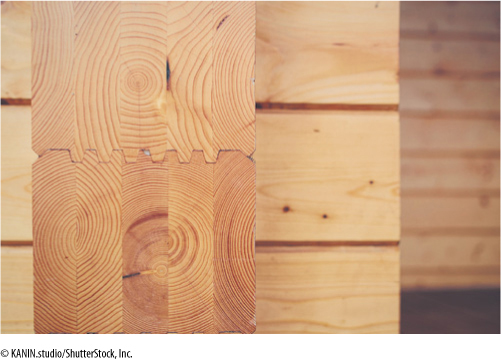
FIGURE 24-56 Because laminated beams are constructed by gluing long, thin strips of wood into a single structure, their length, strength, and shape can be customized for each particular purpose.
Artisan woods are those valued for their beauty (FIGURE 24-57). They often consist mostly of richly colored heartwood such as black (ebony, walnut), red (mahogany), white (maple, holly), and purple (juniper, purpleheart). Care is often taken in the way that artisan woods are cut: Tangential longitudinal sections show the texture caused by rays and fibers, whereas radial longitudinal sections show the pattern of alternating earlywood and latewood. These are referred to as the wood’s grain. Knotty pine is cut tangentially to show off the many dark knots produced when the plant branched prolifically (FIGURE 24-58). The texture of bird’s-eye maple also results from numerous tiny knots. Artisan woods are used to create small objects of beauty such as boxes, musical instruments, bowls, and lamps.
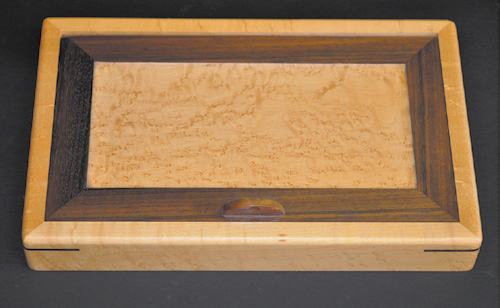
FIGURE 24-57 The pattern in wood is called its “figure.” The figure here is “bird’s eye” in maple, and not only is its cause is unknown, but its presence cannot be predicted until the wood is cut. Bird’s eye figure also occurs in Cuban mahogany and black walnut.
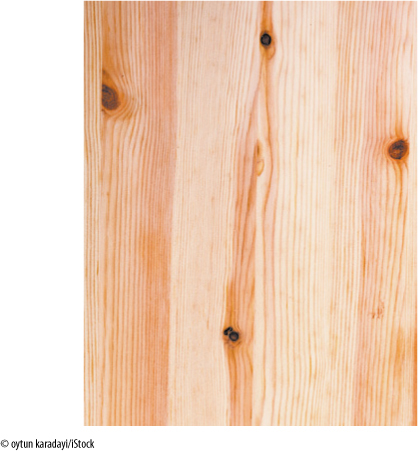
FIGURE 24-58 The dark spots in knotty pine lumber are knots, the bases of branches: As the tree trunk is cut tangentially, the branch bases with their dark reaction wood are cut in cross section.
 At the Next Level
At the Next Level
1. Genetically modified organisms, GMOs. Many people have strong feelings about GMOs; even if you do not, you should be informed about them. Many people object especially to GMO foods, such as inserting genes into cows so that they give more milk. Because we eat or drink foods, GMO foods might put us at risk of consuming the altered DNA. On the other hand, we may at long last be able to cure some diseases by using GMO bacteria or viruses to distribute medicinal genes throughout our bodies. You will find an overwhelming amount of information about GMOs, so use your judgment about which websites or papers are reliable, trustworthy, and worth your time. Also remember that the scientific method was designed to deal with facts, not opinions, values, or ethics. The scientific method tells us how to create GMOs, and ultimately it will tell us whether it is safe for us to consume GMO foods. But it will never tell us whether or not we should alter other organisms for our own benefit.
2. Ornamental and hobby plants. A set of plants that was not mentioned in this chapter are those used in our lawns and gardens, for our hobbies, for flower arrangements, and so on. It is difficult to think of a special occasion such as a wedding, a funeral, a graduation ceremony, or visiting a sick friend without flowers. We have a strong spiritual connection to plants and flowers, and they are often present in churches and religious paintings. Also, many of us like to garden or cultivate hobby plants such as orchids, roses, African violets, or succulents. You will have no trouble finding information on these topics, but a part of your independent study should be repeated trips to a nursery to get some plants for your own enjoyment and care.
3. Archaeology of useful plants. Botanical archaeologists have many resources when studying sites of ancient human activity. Wood anatomy is so complex that by analyzing the types of vessels, rays, and so on, we can identify wooden objects to genus, sometimes even to species. Somewhat surprisingly, wood that is incompletely burned—charcoal—retains its anatomy and does not rot, so we can analyze even the remains of temples, palaces, ships, chariots, and spears that were burned thousands of years ago. Because textile fibers are usually fibrovascular bundles, they too offer many features that can be used to identify the plants used to produce cloth or rope. On an even smaller level, many plants, especially grasses such as the cereal grains, produce tiny silica bodies within their cells. Silica bodies are diverse in their size, shape, and other features; these are usually genus specific, which means that it is often possible to examine a single silica body and know which genus of plant produced it. Being essentially tiny pieces of glass, silica bodies do not burn, rot, or break down during digestion. By sifting the ashes of ancient cooking fires (and ancient toilets), silica bodies can be recovered and give us a clue as to which species were being consumed. Archaeologists refer to silica bodies as phytoliths (pronounced FIGHT oh liths). Fermentation of grape juice to wine produces tiny crystals of tartaric acid so archaeologists examine ancient pottery for such crystals. Keywords: paleoethnobotany, archaeobotany, and phytolith.
SUMMARY
1. Humans are omnivores; we and our ancestors have eaten plants for hundreds of thousands of years.
2. Agriculture and domestication of plants began in four separate areas shortly after the Holocene warming began.
3. Cultivation of crops required that people stop migrating and instead live in permanent settlements. This led to the establishment of cities, writing, and mathematics.
4. The earliest domesticated crops had edible portions that were easy to harvest and store, could be eaten with simple preparation, and were annual plants that could be harvested less than a year after planting.
5. Cereal grains are the small fruits of certain grasses such as wheat, rice, barley, and oats. They are an important source of carbohydrates for most of the world’s population.
6. Many cereal grains are used as feed for livestock but can be consumed directly by people as well. It typically requires 10 kg of plant feed to produce 1 kg of animal protein.
7. Foods with a low glycemic index are digested slowly and their sugars enter our blood stream gradually. Such foods do not disturb our levels of insulin and glucagon; they allow our metabolism to be more uniform.
8. Seeds of legumes such as beans, peas, and lentils are important sources of plant protein.
9. Herbs and spices are foods we eat for their aroma and flavor, but they have little nutritional value.
10. When speaking about textiles, the word “fiber” usually refers to whole groups of sclerified cells, such as fibrovascular bundles, but it may also refer to individual sclerenchyma fibers as well as tracheids.
11. Archeological evidence indicates that humans used flax fibers as much as 36,000 years ago, but the search for new fibrous plants continues; hemp and kenaf seem to have excellent qualities as sources for useful fibers.
12. Paper produced by the kraft method is acid-free, stable, and long lasting.
13. Engineered woods such as plywood, particleboard, and laminated beams produce less waste than does sawn lumber, and large pieces of wood can be made from small ones.
14. Artisan woods are valued for their beauty; they are obtained from the heartwood of dicot trees.
IMPORTANT TERMS
acid-free paper
antioxidant
artisan wood
bast fiber
bran
capsaicin
cassia
cereal grains
complementary proteins
complete protein
drying oil
engineered wood
ethnobotany
extraxylary fiber
Fertile Crescent
food desert
genetically modified organism (GMO)
geotextile
germ (of a seed)
gluten
glycemic index
hard fiber
herb
incomplete protein
infusion
legumes
old growth forest
retting
soft fiber
spice
tetrahydrocannabinol (THC)
whole wheat flour
wood fiber
xylary fiber
REVIEW QUESTIONS
1. Which aspects of our teeth indicate we have evolved so that we can eat plants?
2. How long have humans used fire?
3. What is the Holocene Epoch? When did it begin? What has happened to Earth’s temperature during the Holocene Epoch?
4. Domestication of plants began in at least four separate areas; name the areas and the plants.
5. The earliest plant species that were domesticated had several fundamental features; list these features and discuss why each was important. (Hint: Use potatoes as an example.)
6. What are cereal grains? What plant family are they in? Give six examples.
7. Wheat flour has an unusual protein; name the protein and describe how it is important in making bread.
8. Which vitamin is lacking from rice? Describe how genetic engineering has addressed this problem. What is the name of the GMO rice, and is it now widely cultivated?
9. When cattle eat plant feed such as corn or hay, the cattle are ________________ consumers. When we eat the animal protein, we are ________________________ consumers. In general, it takes ________ kg of feed to produce _________ kg of animal protein.
10. Describe a food with a high glycemic index. Why are such foods harmful to our metabolism? Describe a food with a low glycemic index.
11. Name five species of legumes. Which nutrient is especially abundant in legumes? Why are their root nodules important?
12. What are complementary proteins? Name three pairs.
13. How are antioxidants important? What do they protect cells from? Name several antioxidants and list several dark green leafy vegetables rich in antioxidants.
14. What is the active ingredient in hot peppers? Describe how the pungency of hot peppers is measured.
15. How do we know that ancient Egyptians used black pepper?
16. What is an infusion? Name two popular infusions.
17. Morphine is an analgesic; what does that mean? Why is its use in hospitals limited?
18. The term “fiber” has several meanings with regard to textiles. Briefly describe bast fibers, soft fibers, hard fibers, and wood fibers. Give an example of each.
19. Kenaf is currently being investigated as a possible new source of useful fibers. Describe the properties of kenaf that make it seem favorable.
20. What is acid-free paper? Why is it important? What is happening to books and magazines that were printed on paper that contains acid?
21. As newspapers, printer paper, and other papers are recycled, their fibers are damaged so the new paper is not as strong as the original paper. Does this make the recycled paper useless, or is strength not crucial for some products? If so, name some products that can be made with recycled paper.
22. Describe old growth forests. Do they have a high or low diversity of trees when compared to tree plantations? Which types of trees do woodpeckers prefer?
23. What is engineered wood? Give several examples. Can this technique produce pieces of wood that are longer or wider than the trees used to make it? Can it be made with unusual shapes? Give examples of where engineered wood is used.
24. What is an artisan wood? Which properties are especially important? These woods are usually obtained from only certain parts of the logs of certain types of trees. Describe why this is so.
Design Credits: Hummingbird: © Tongho58/Moment/Getty; Green Plant Cells: © ShutterStock, Inc./Nataliya Hora; Purple Tulip: © ShutterStock, Inc./Marie C Fields;
Dandelion: © ShutterStock, Inc./Danielkreissl; Poppy: © ShutterStock, Inc./Saruri; Plant Icon: © ShutterStock, Inc./Vector; Digging Man Icon: © ShutterStock, Inc./Z-Art